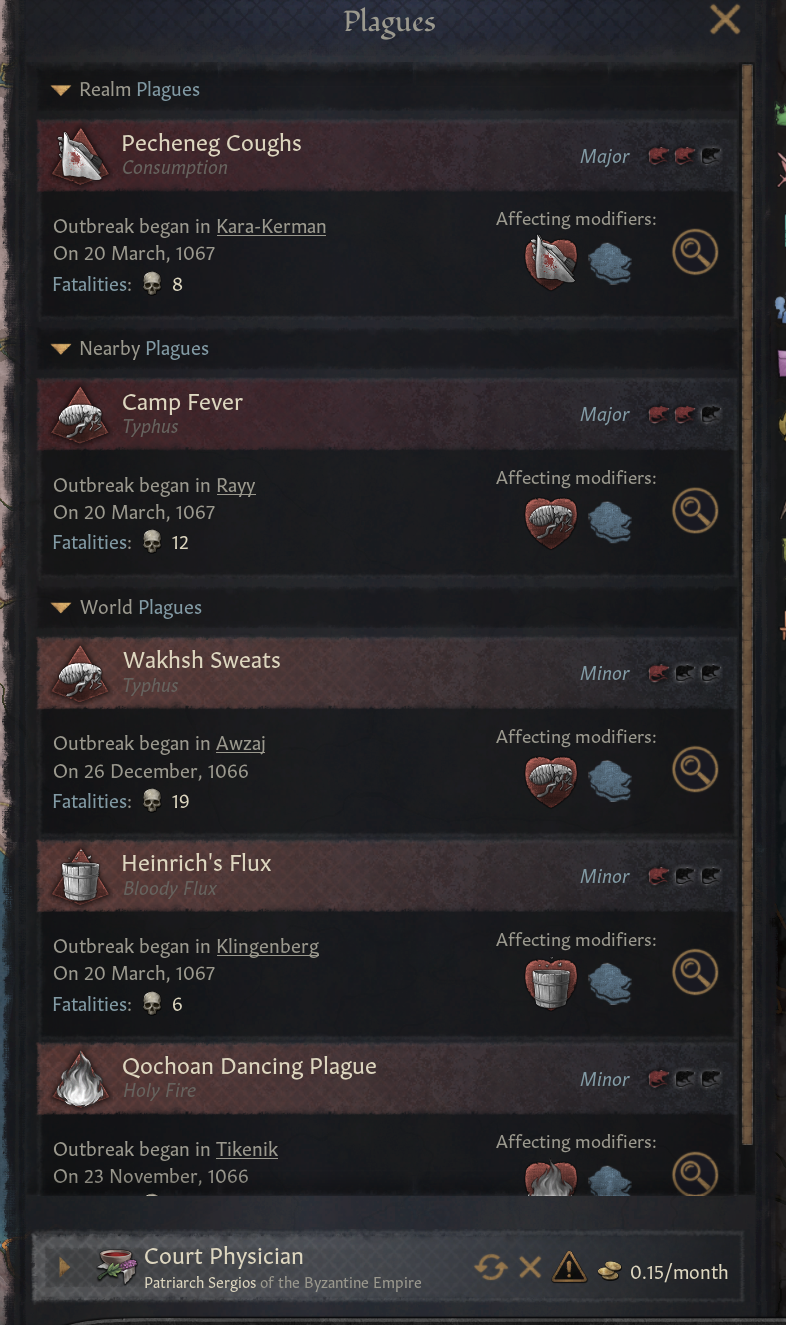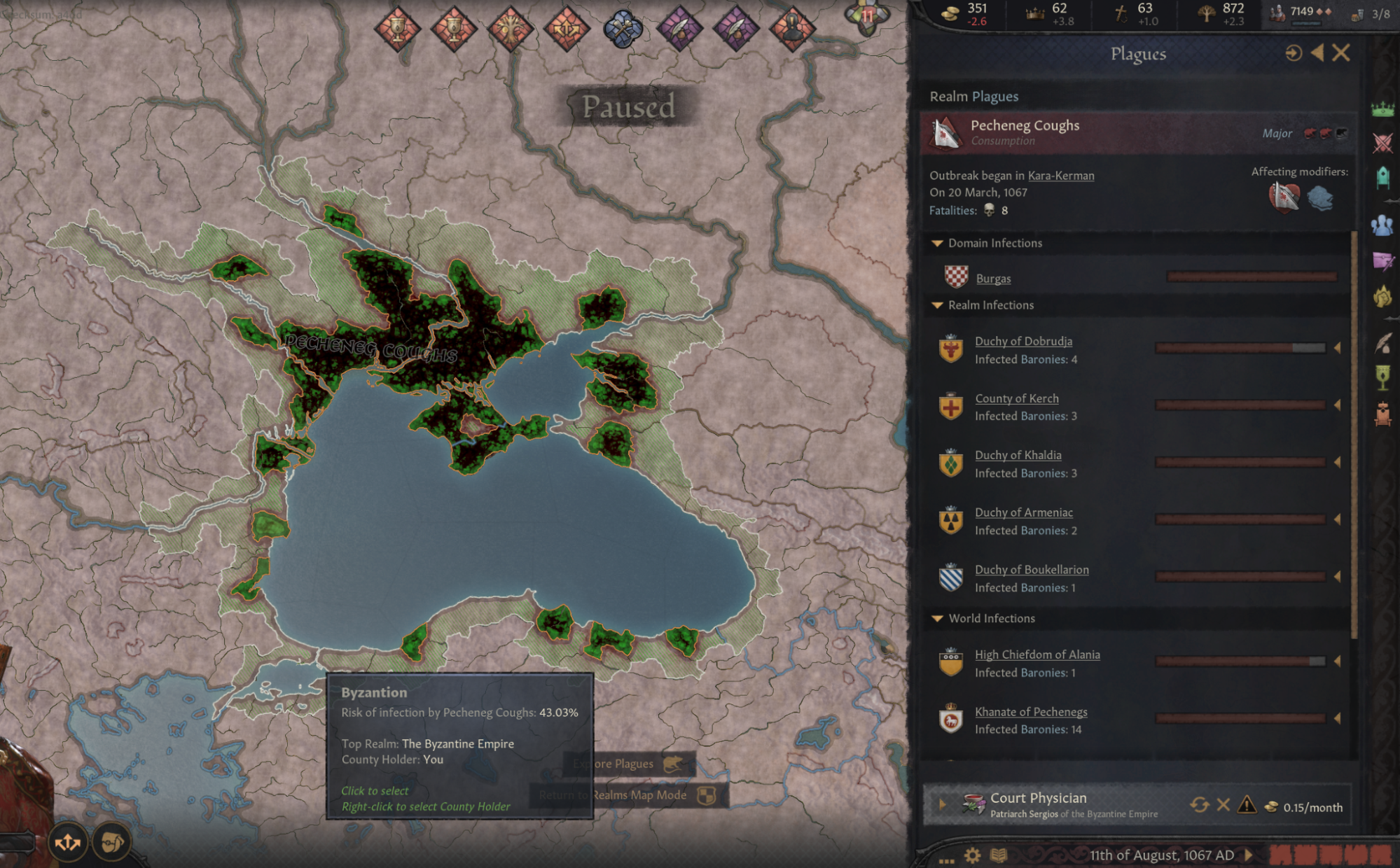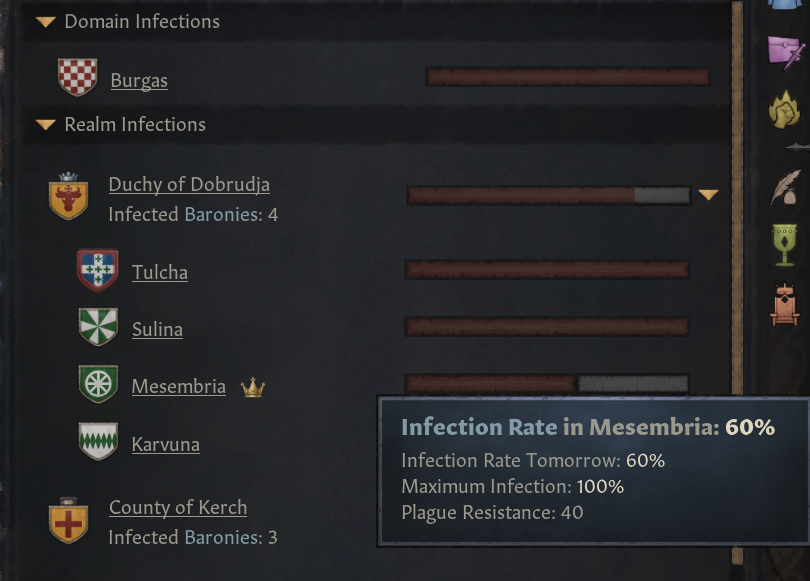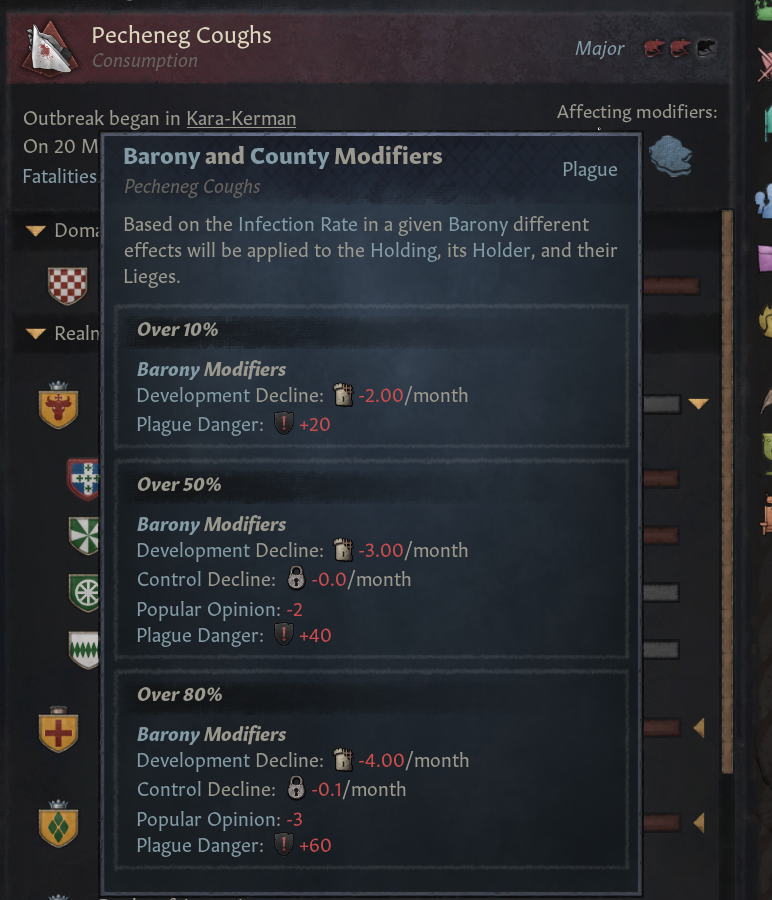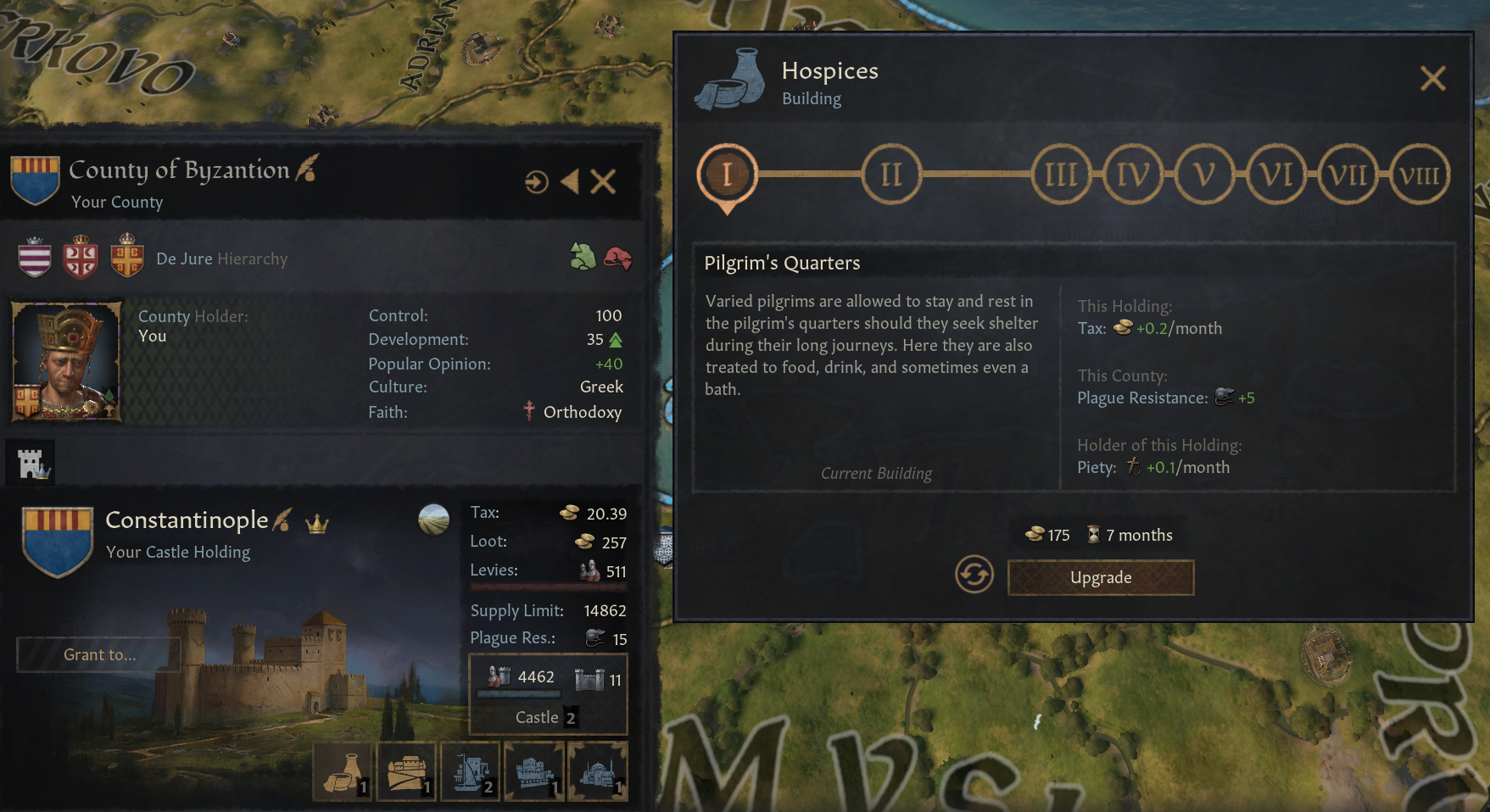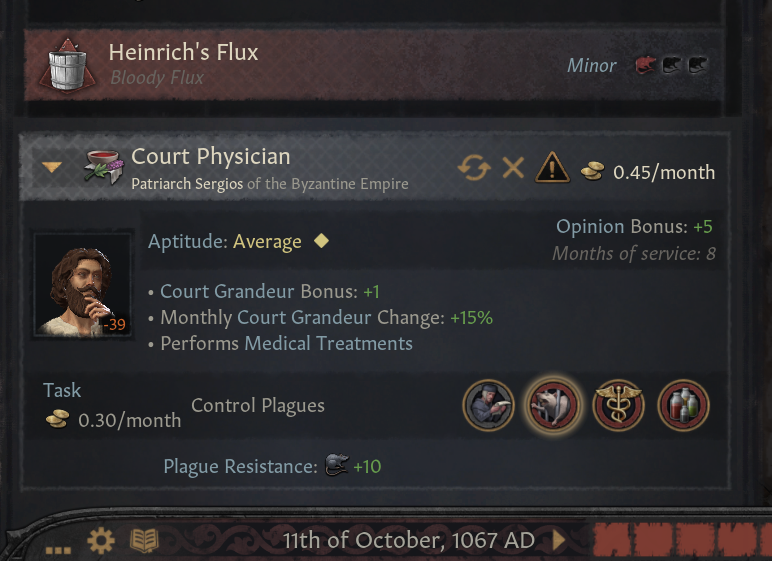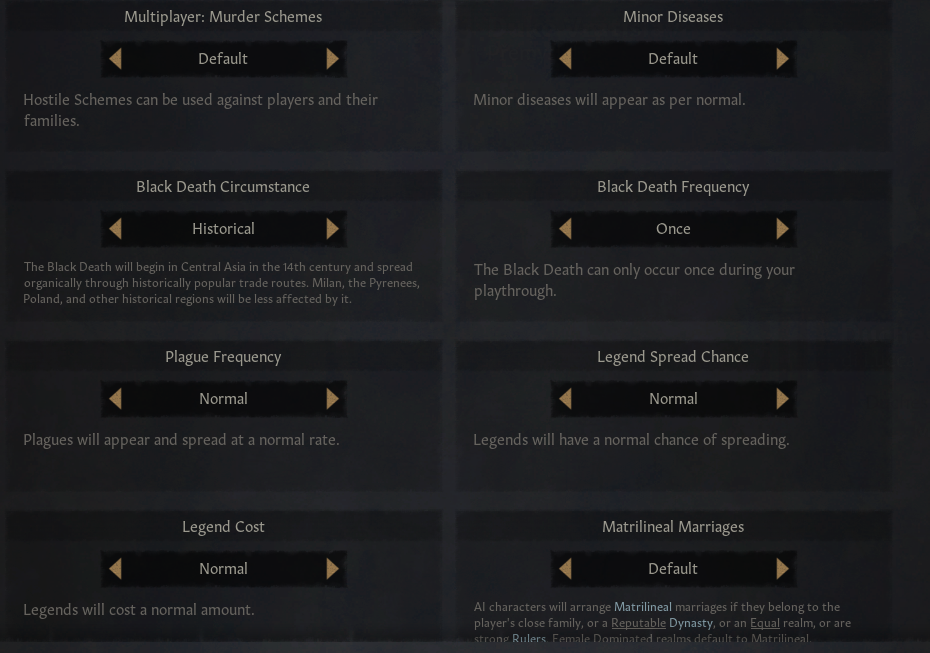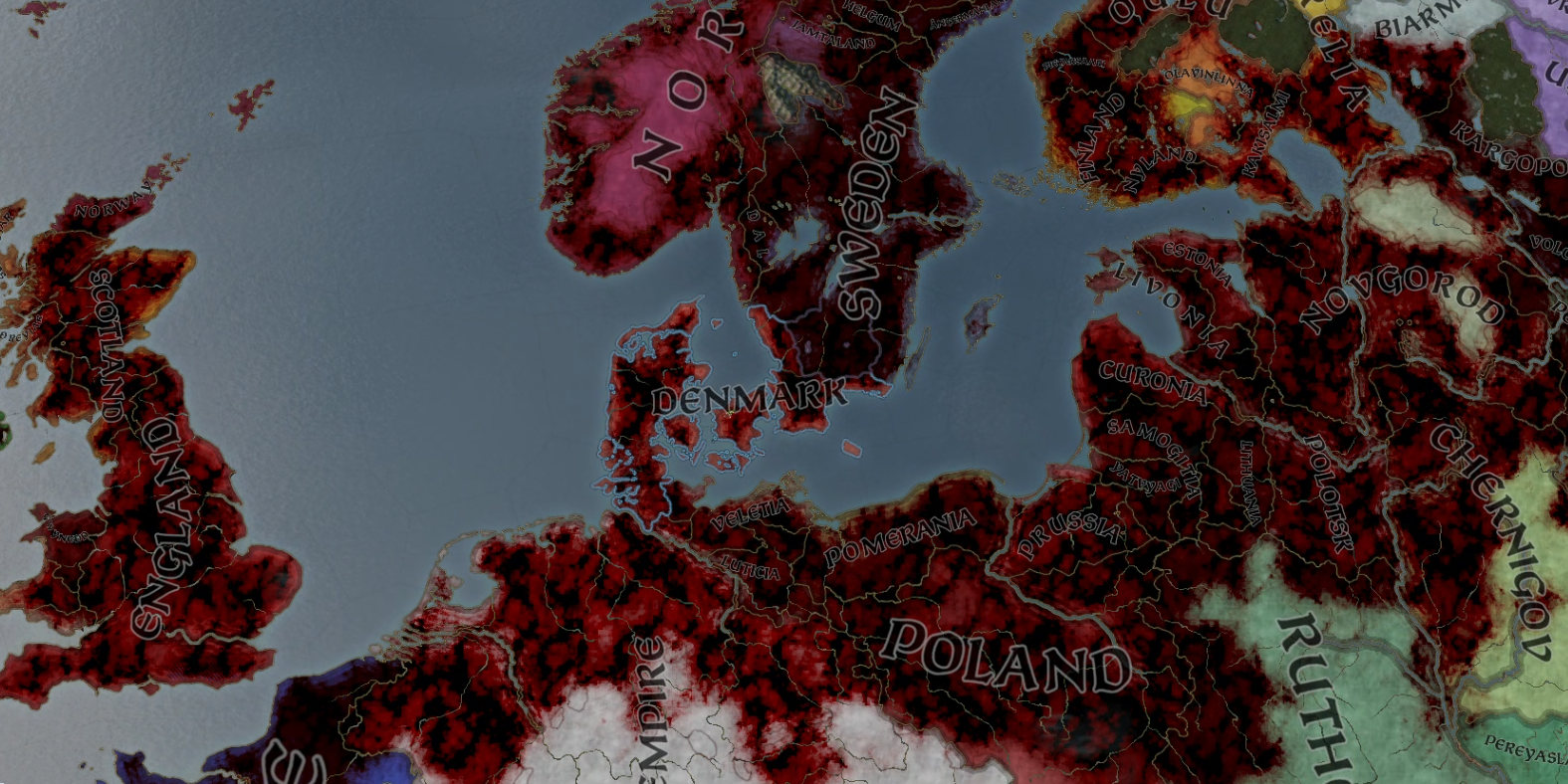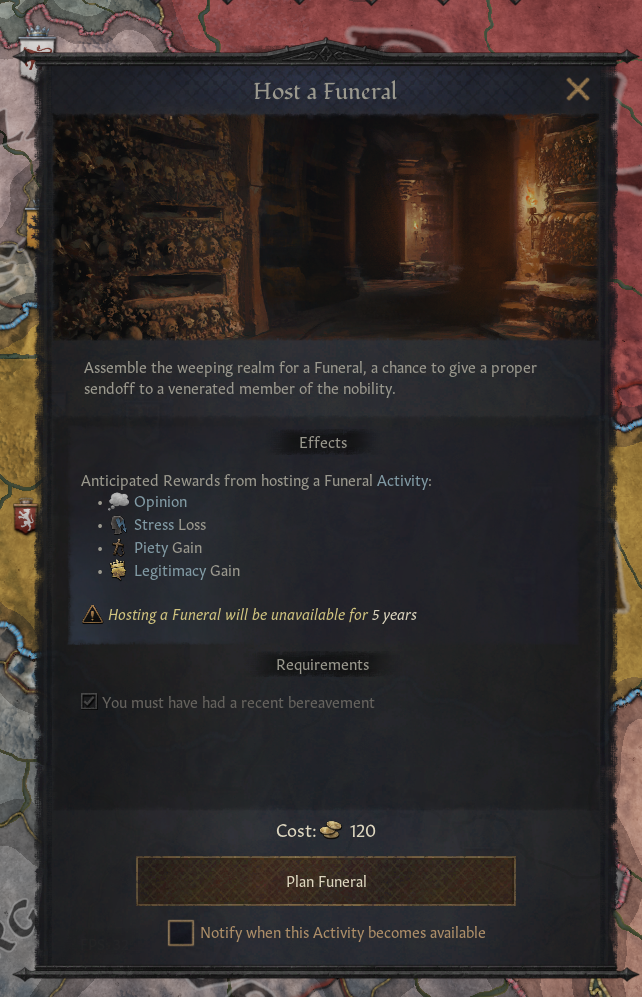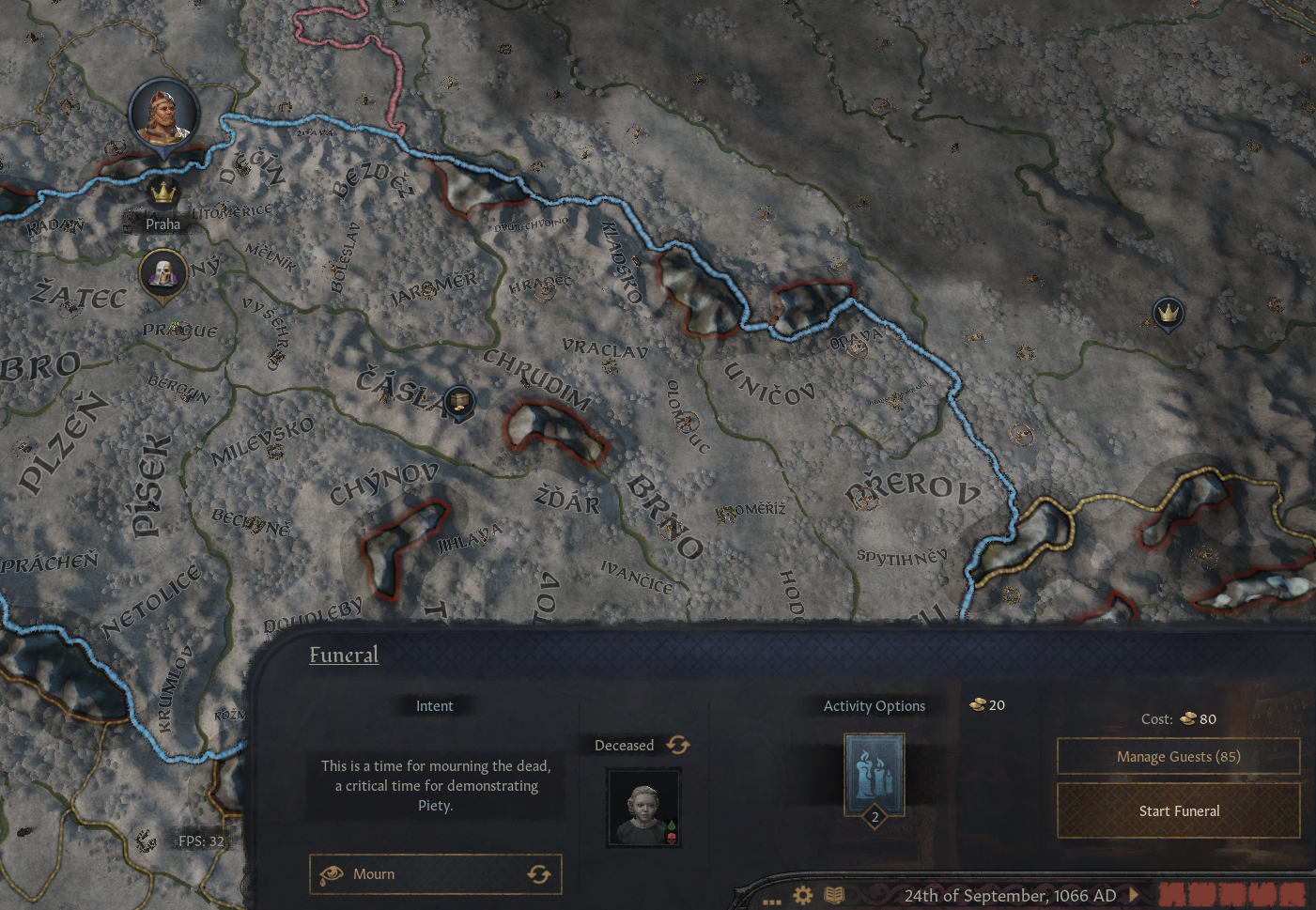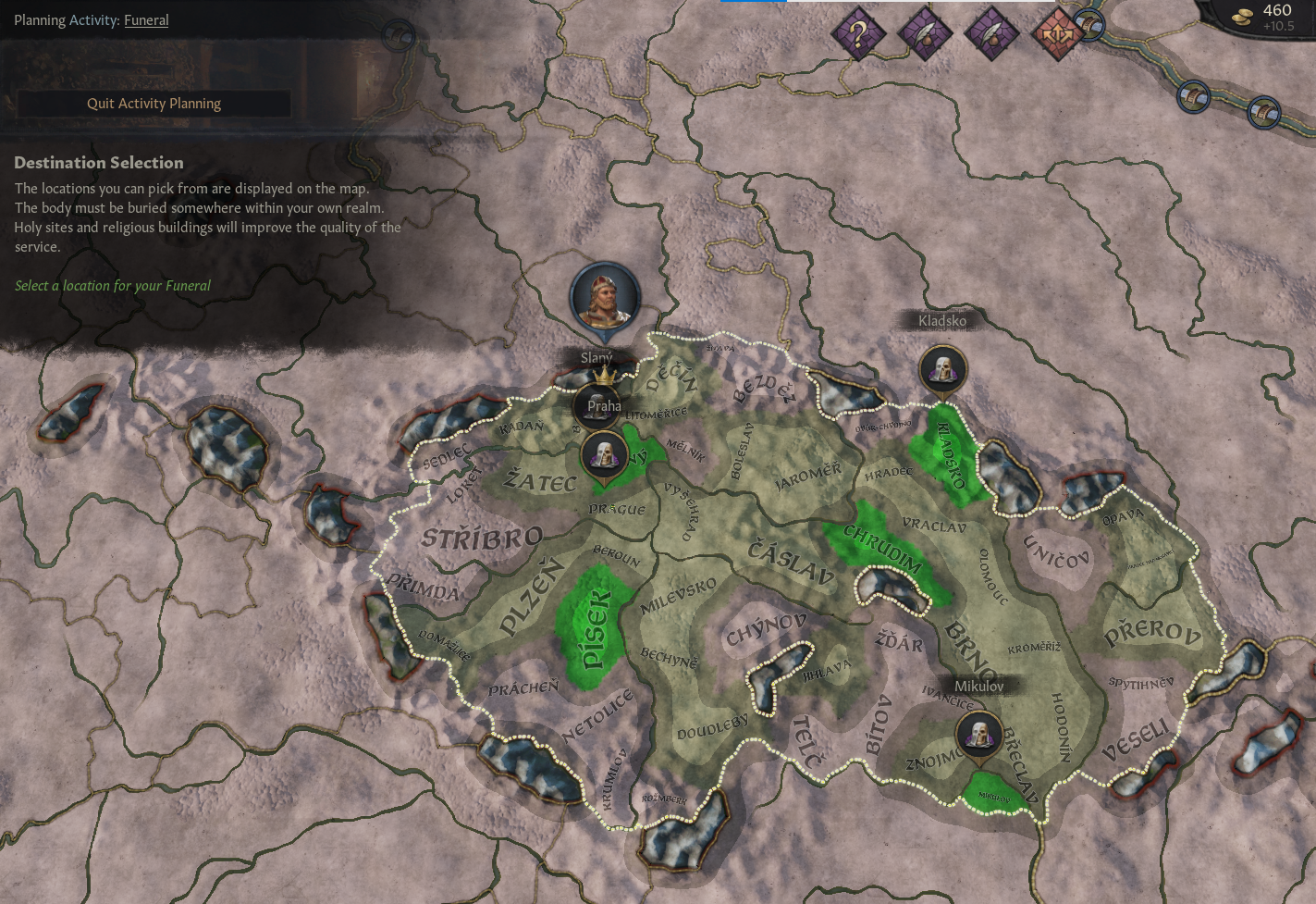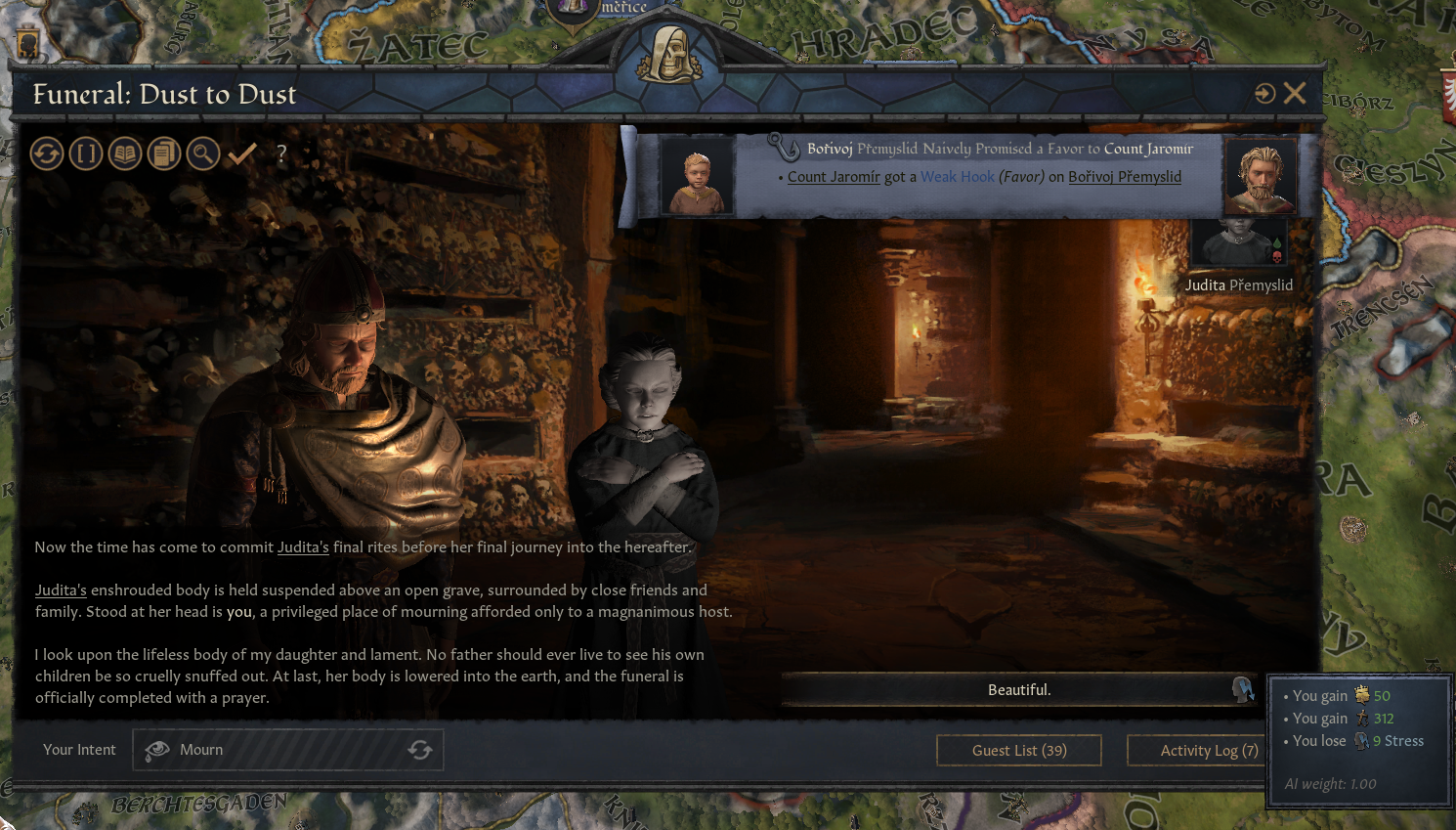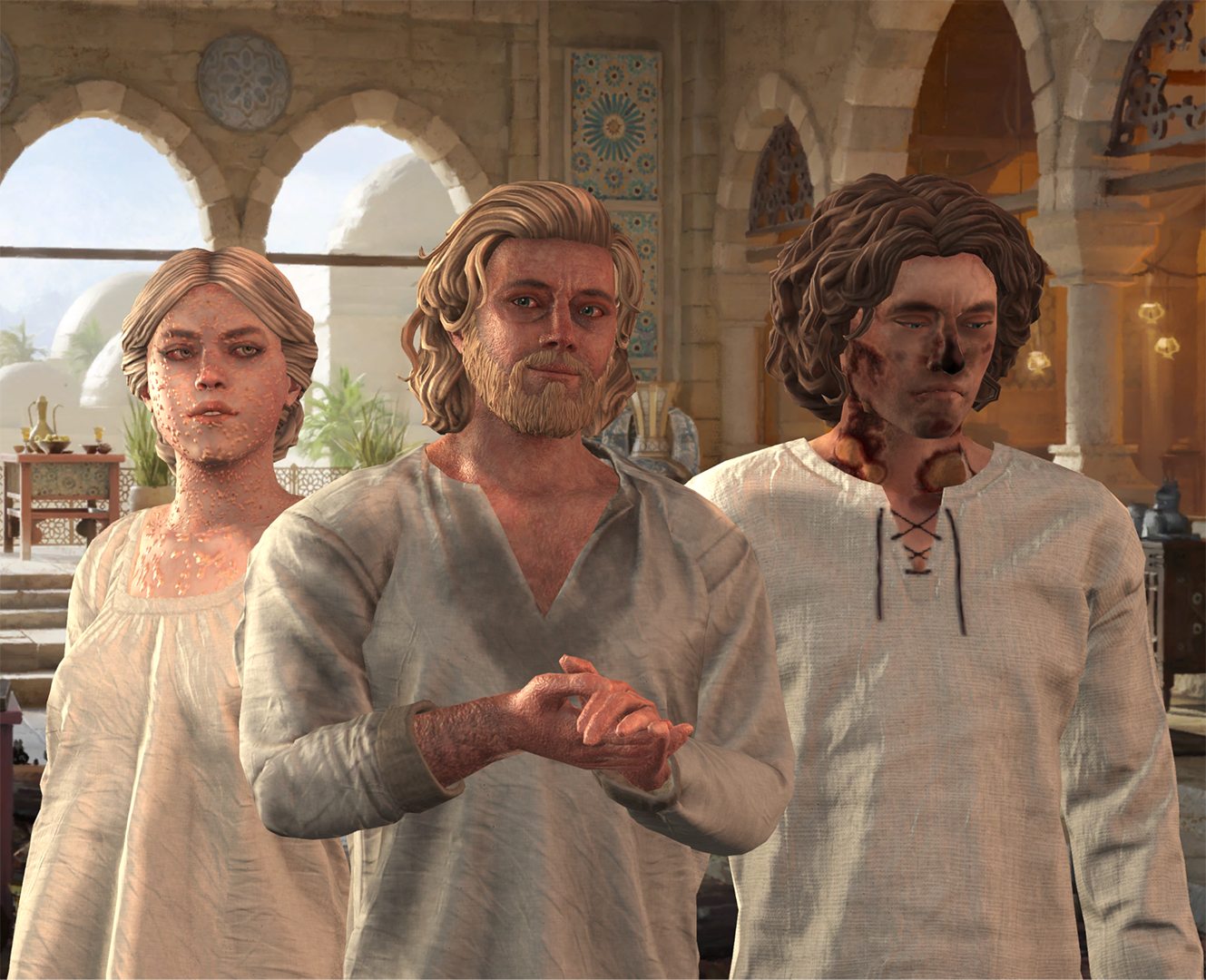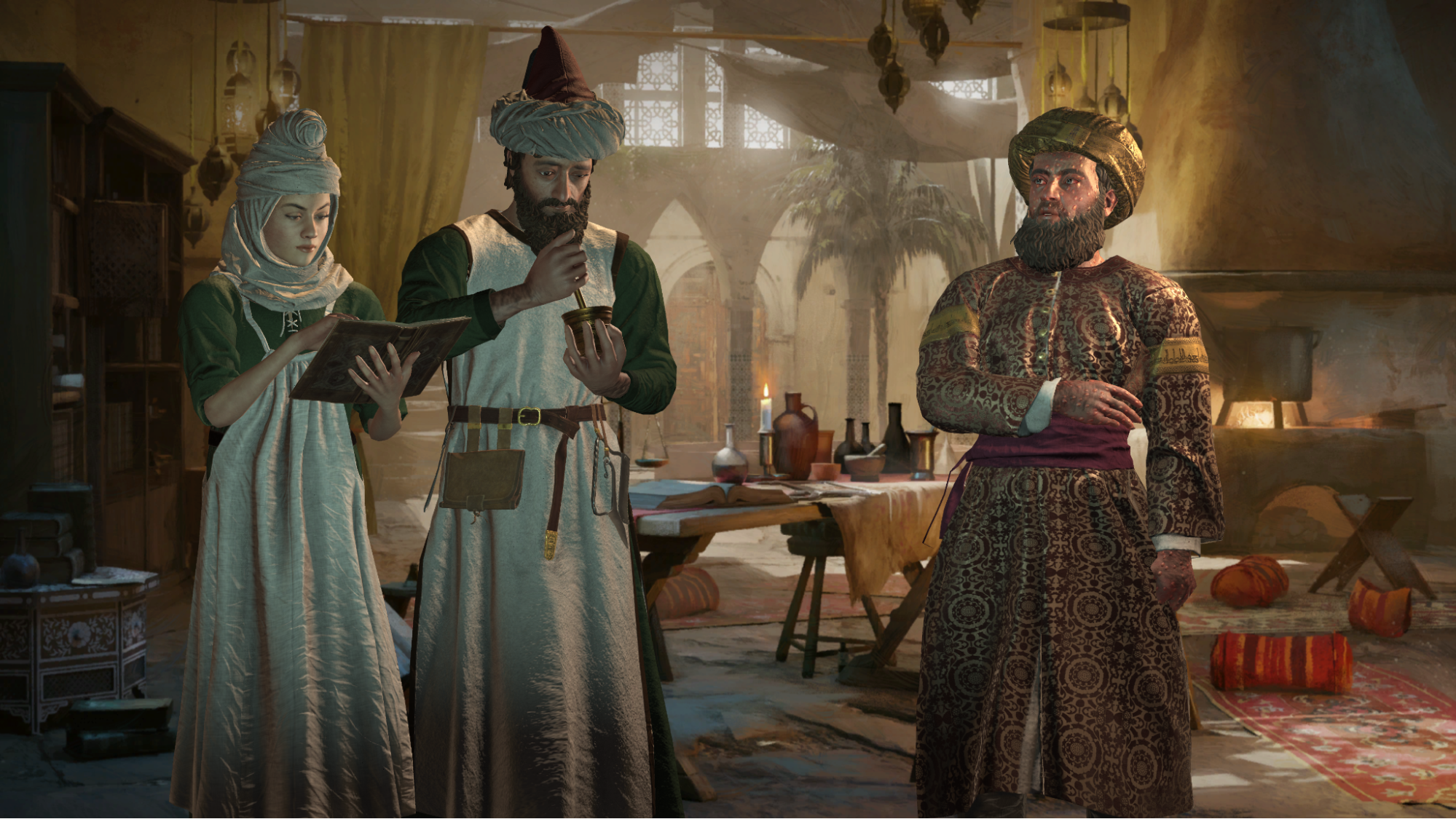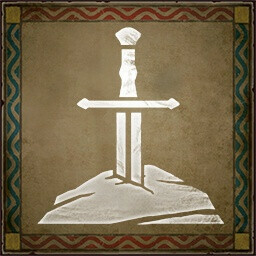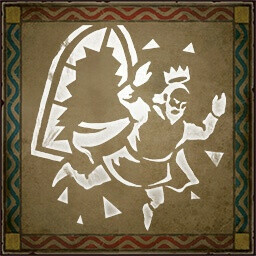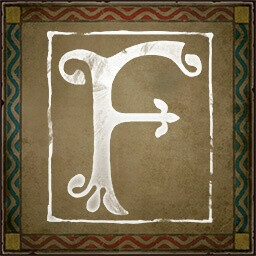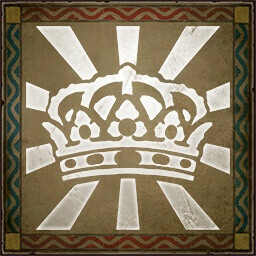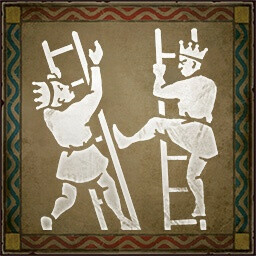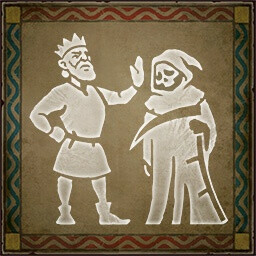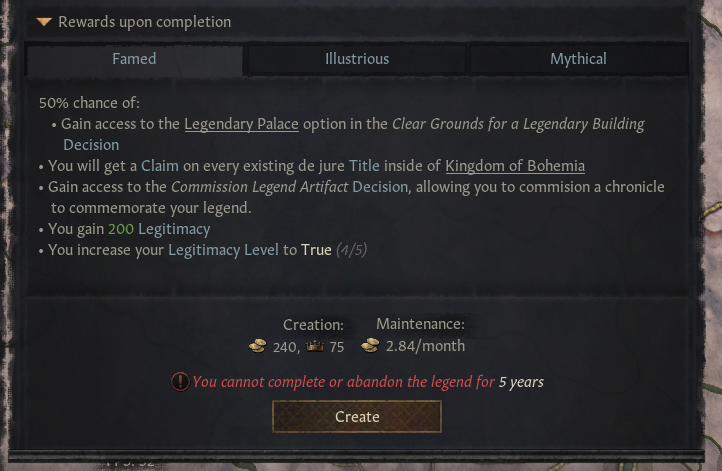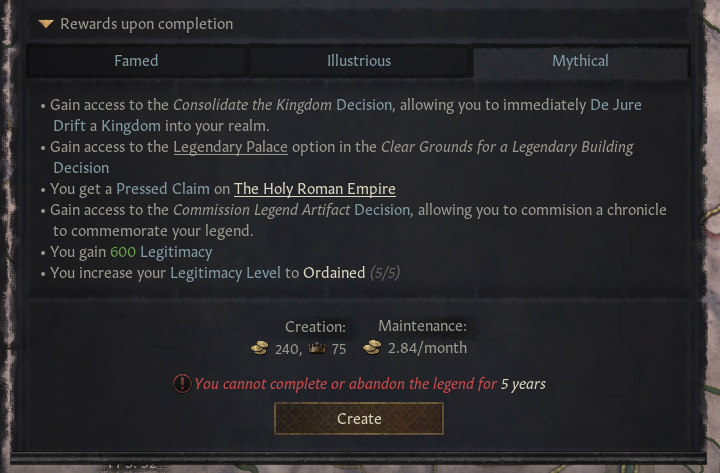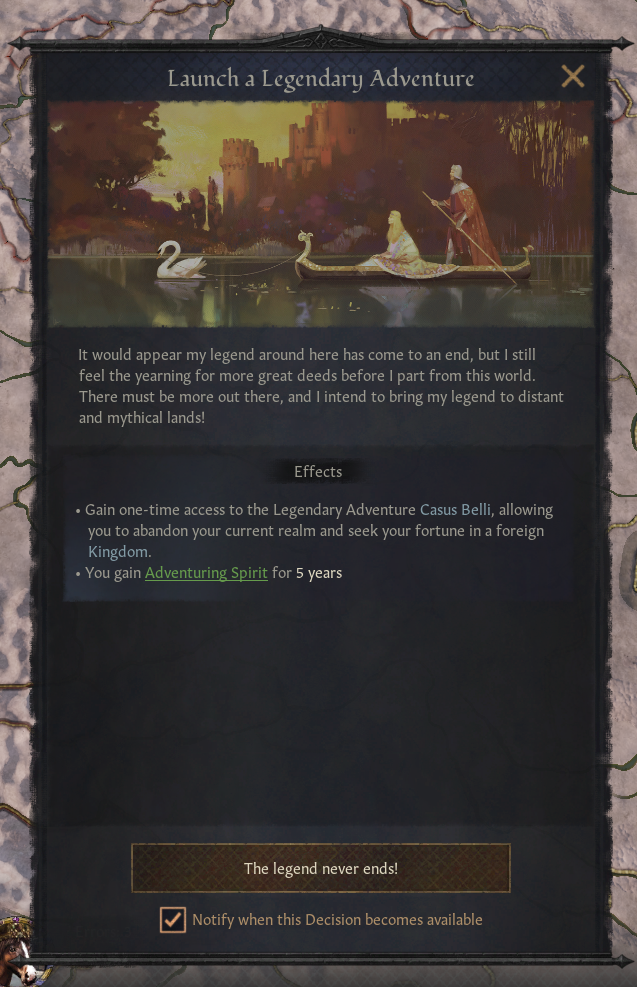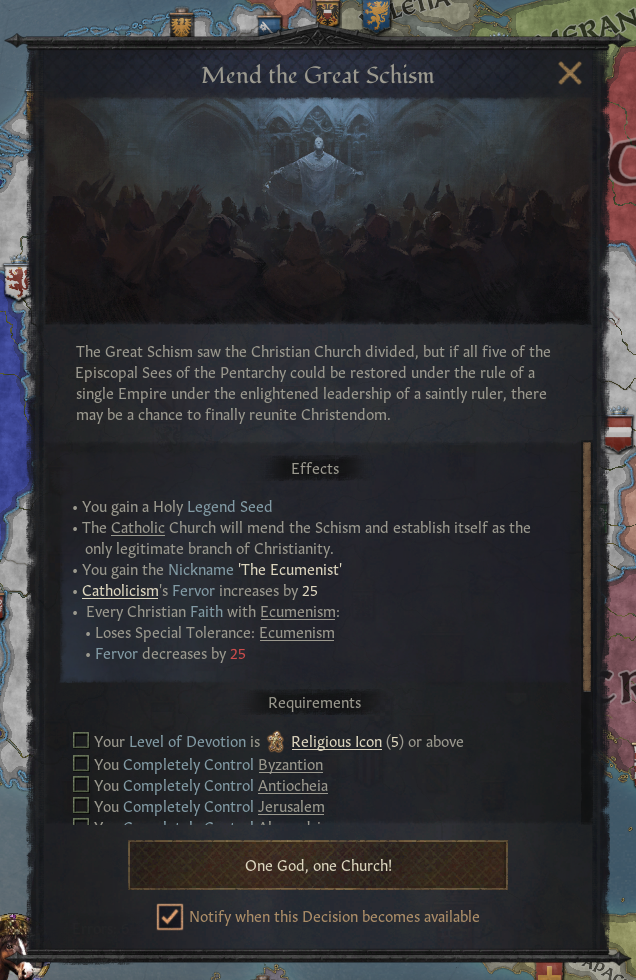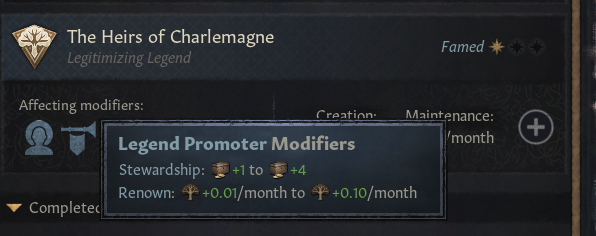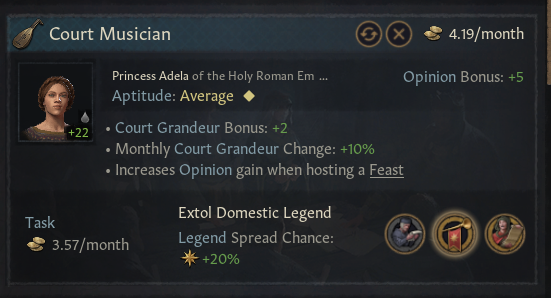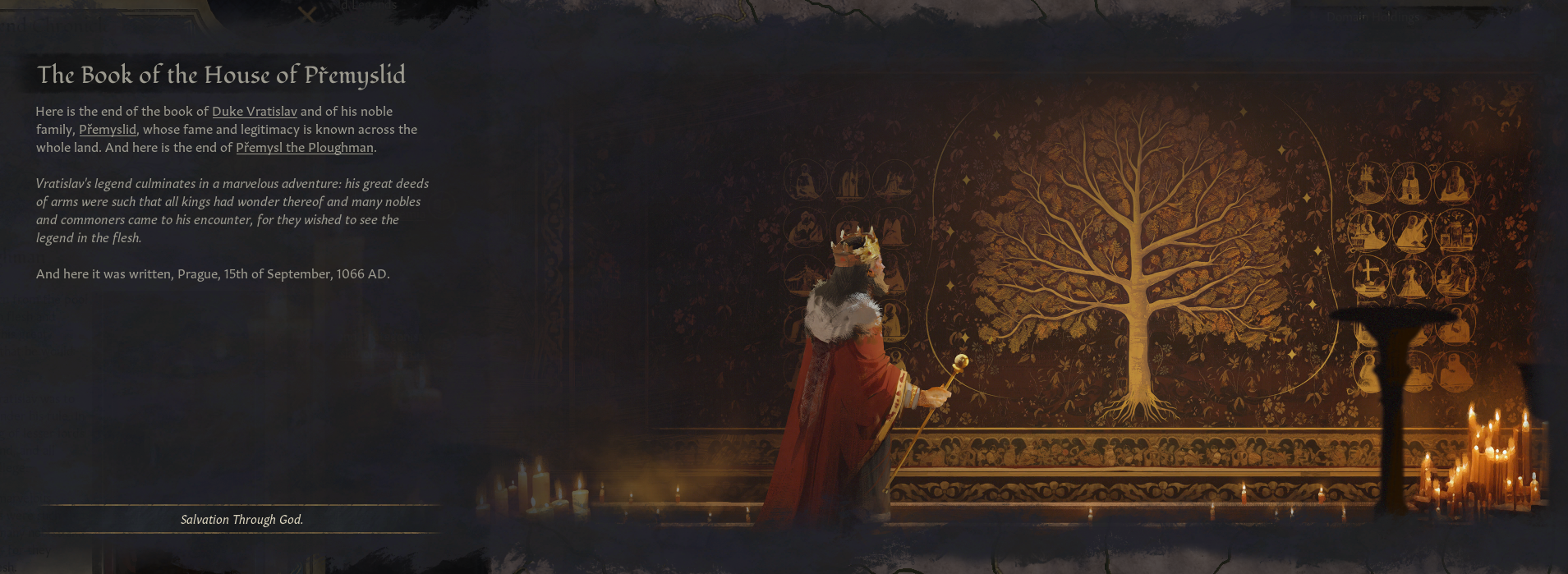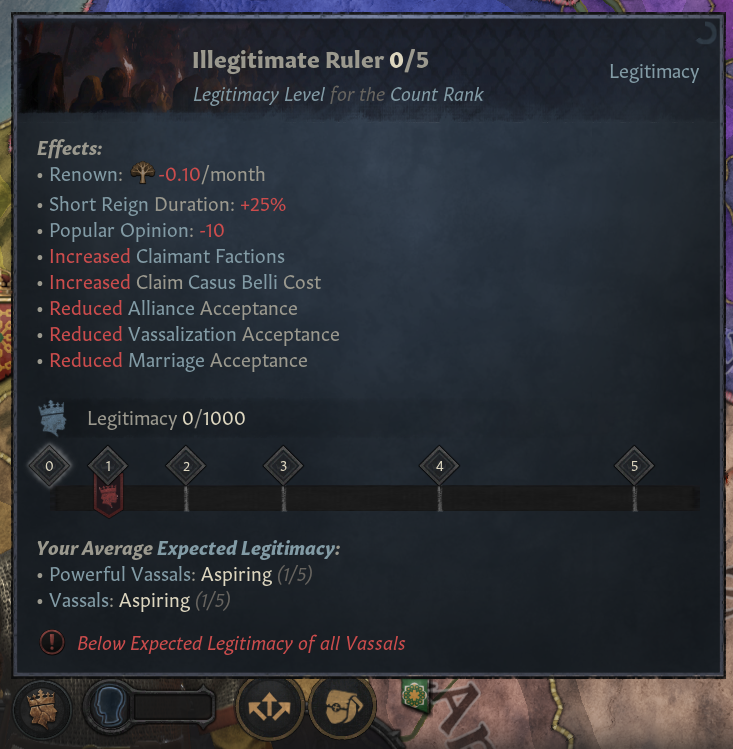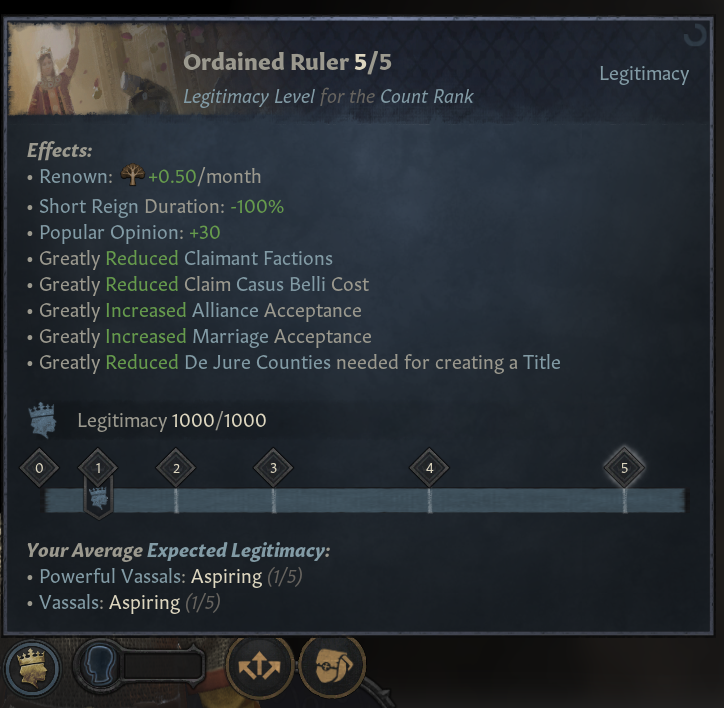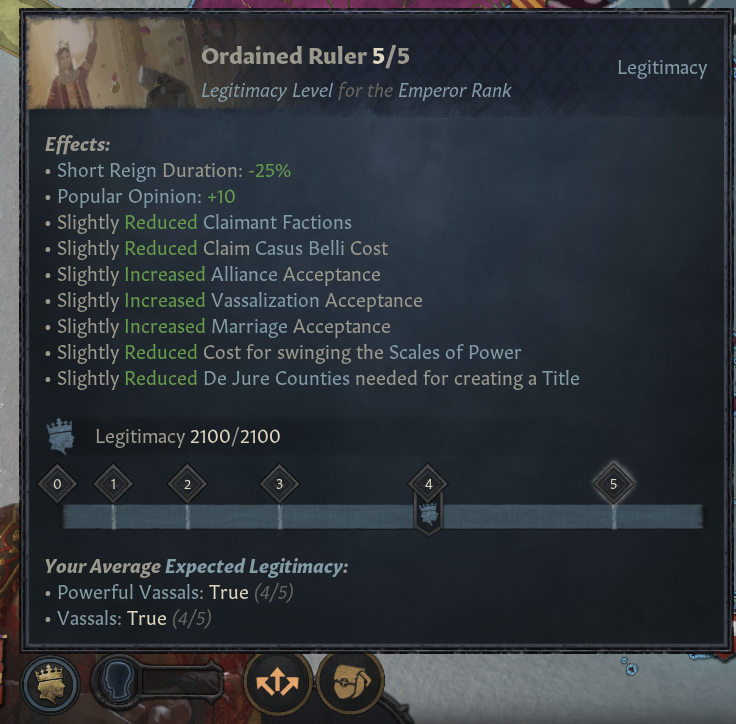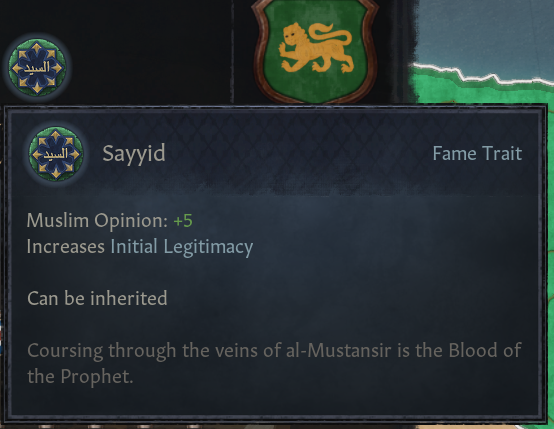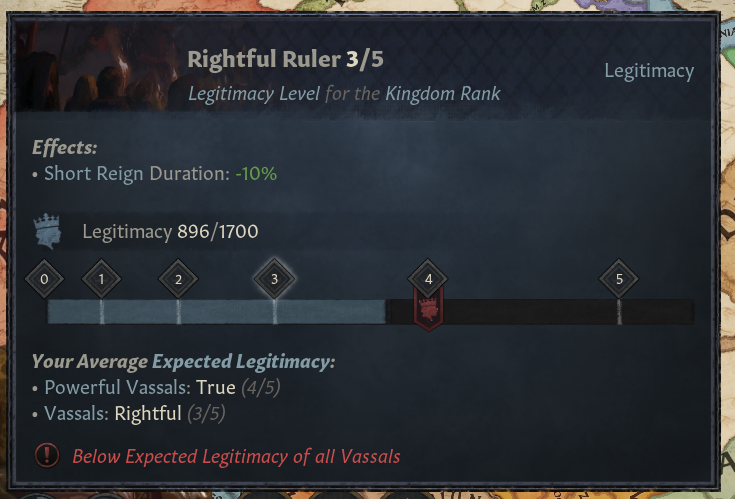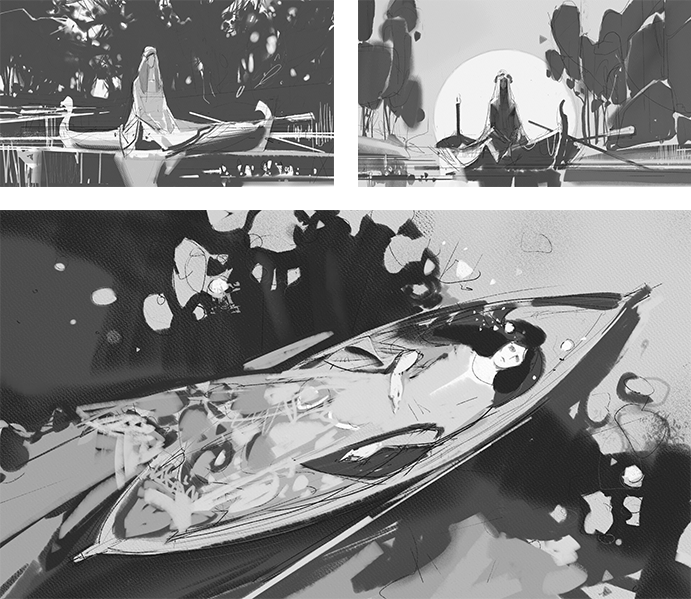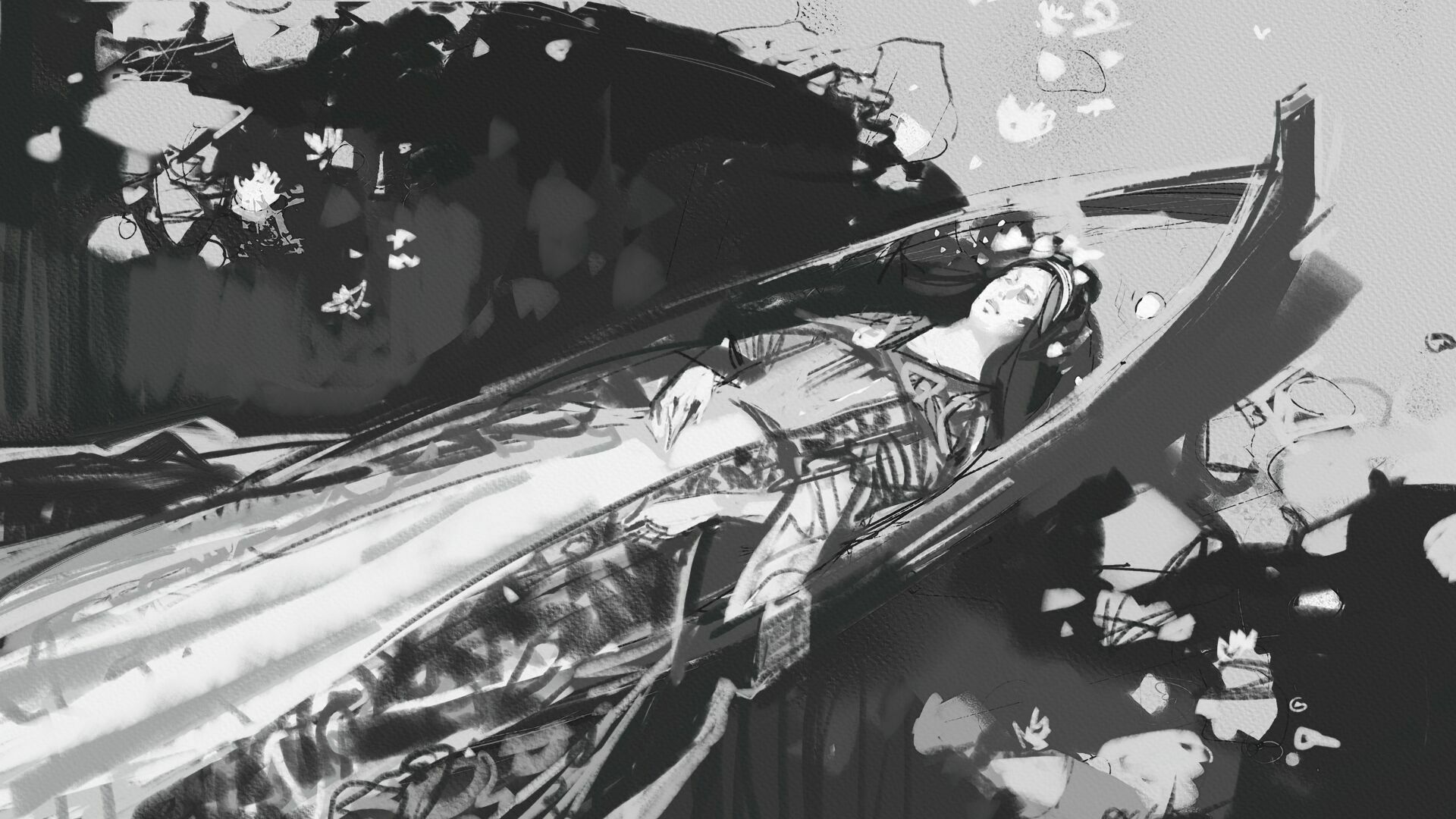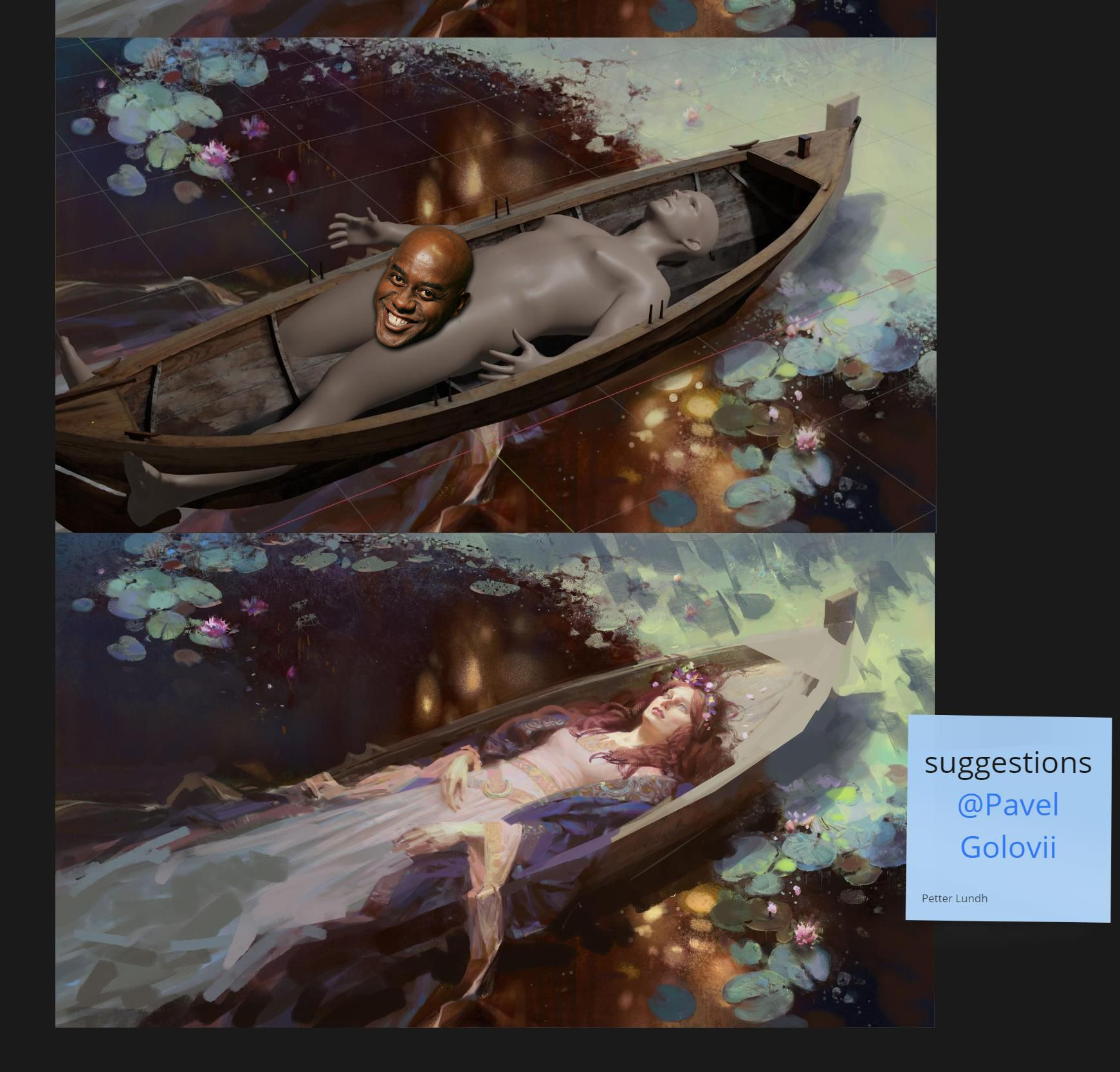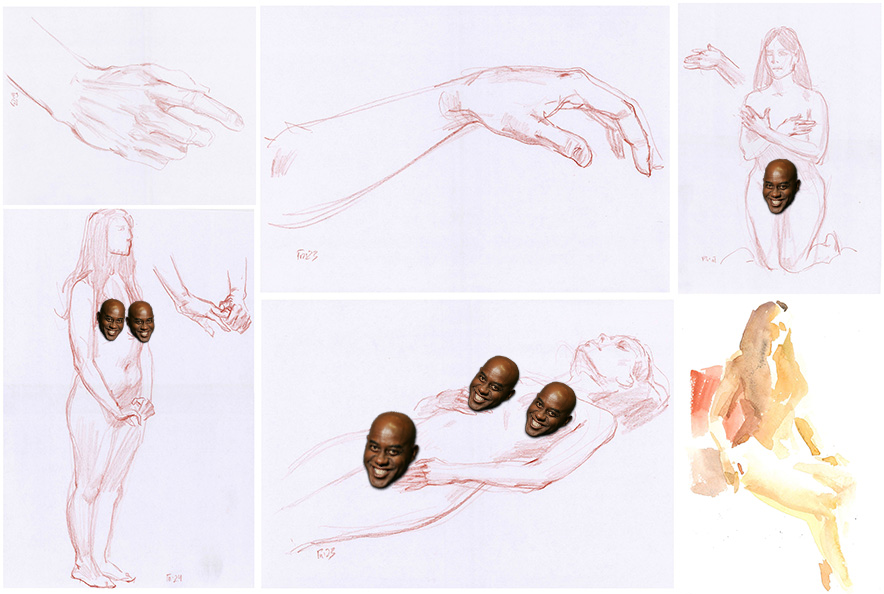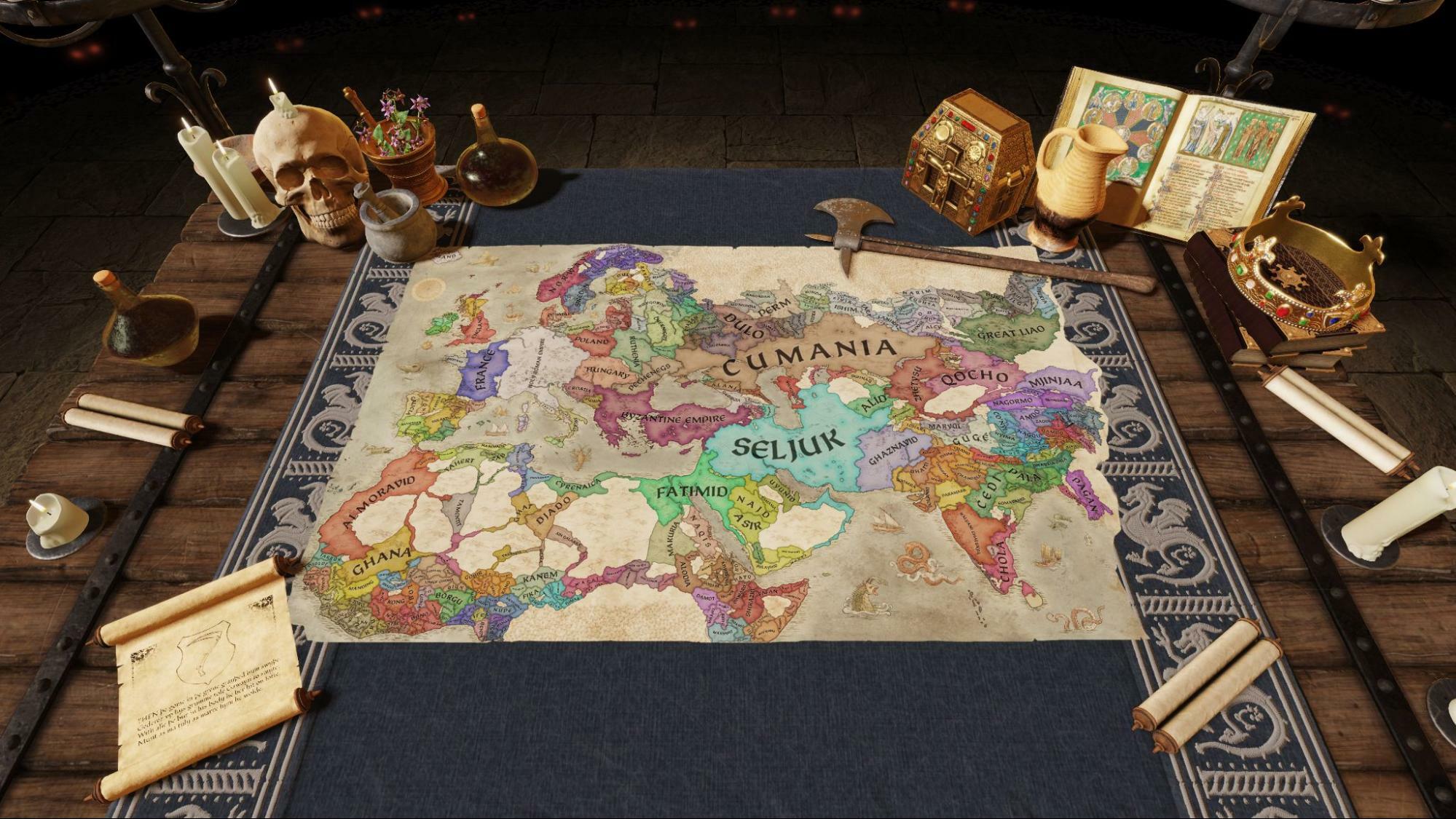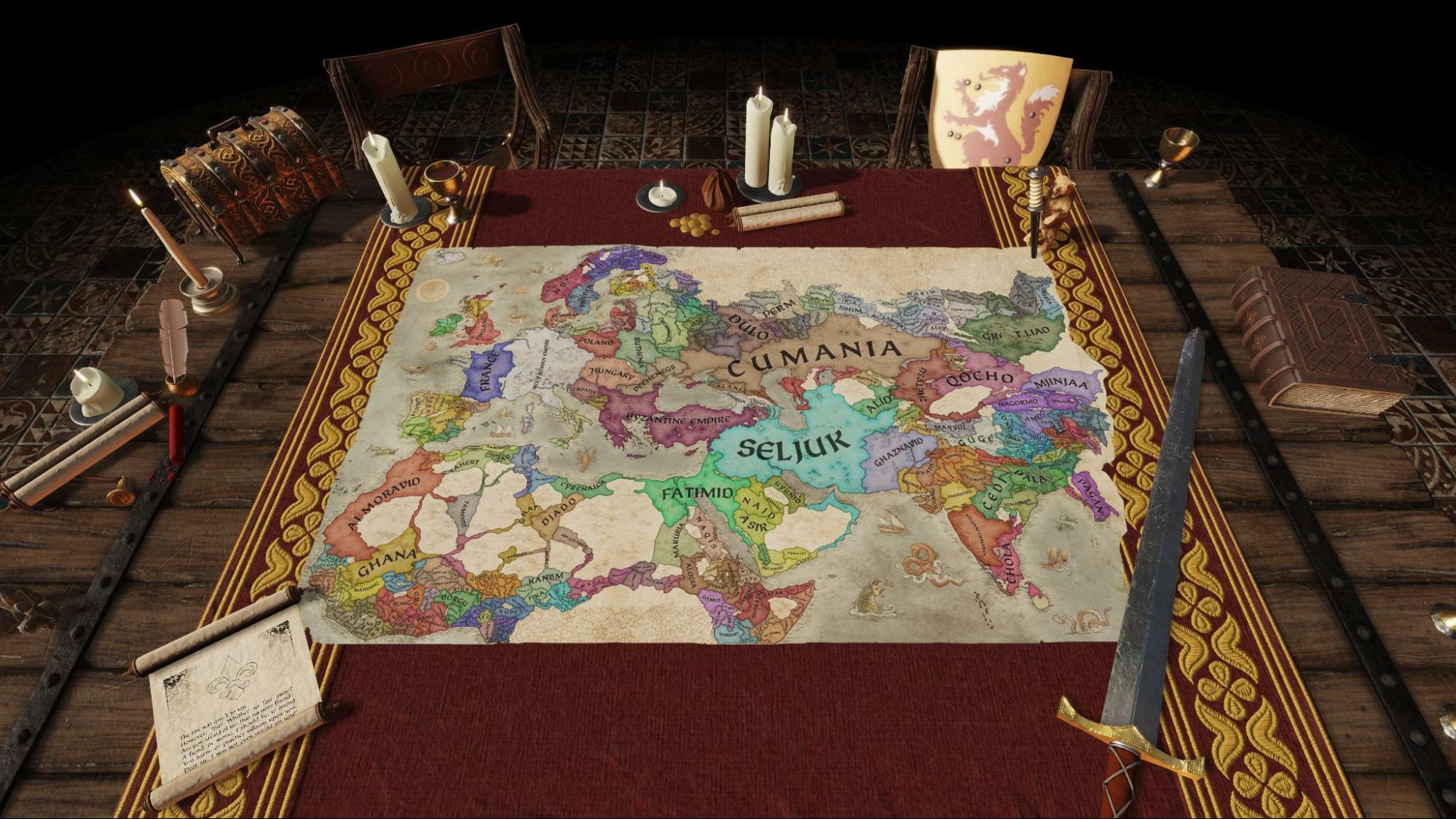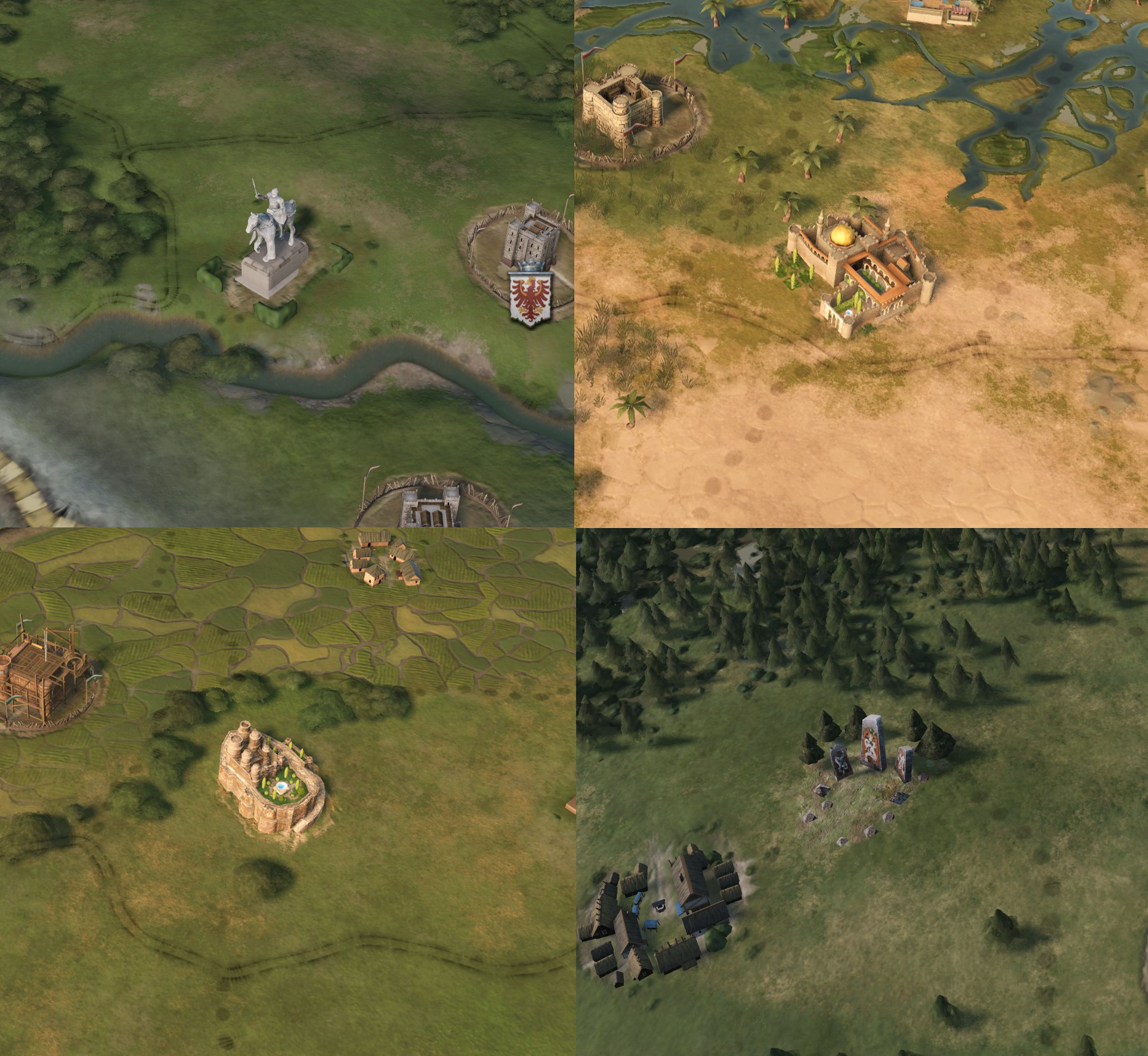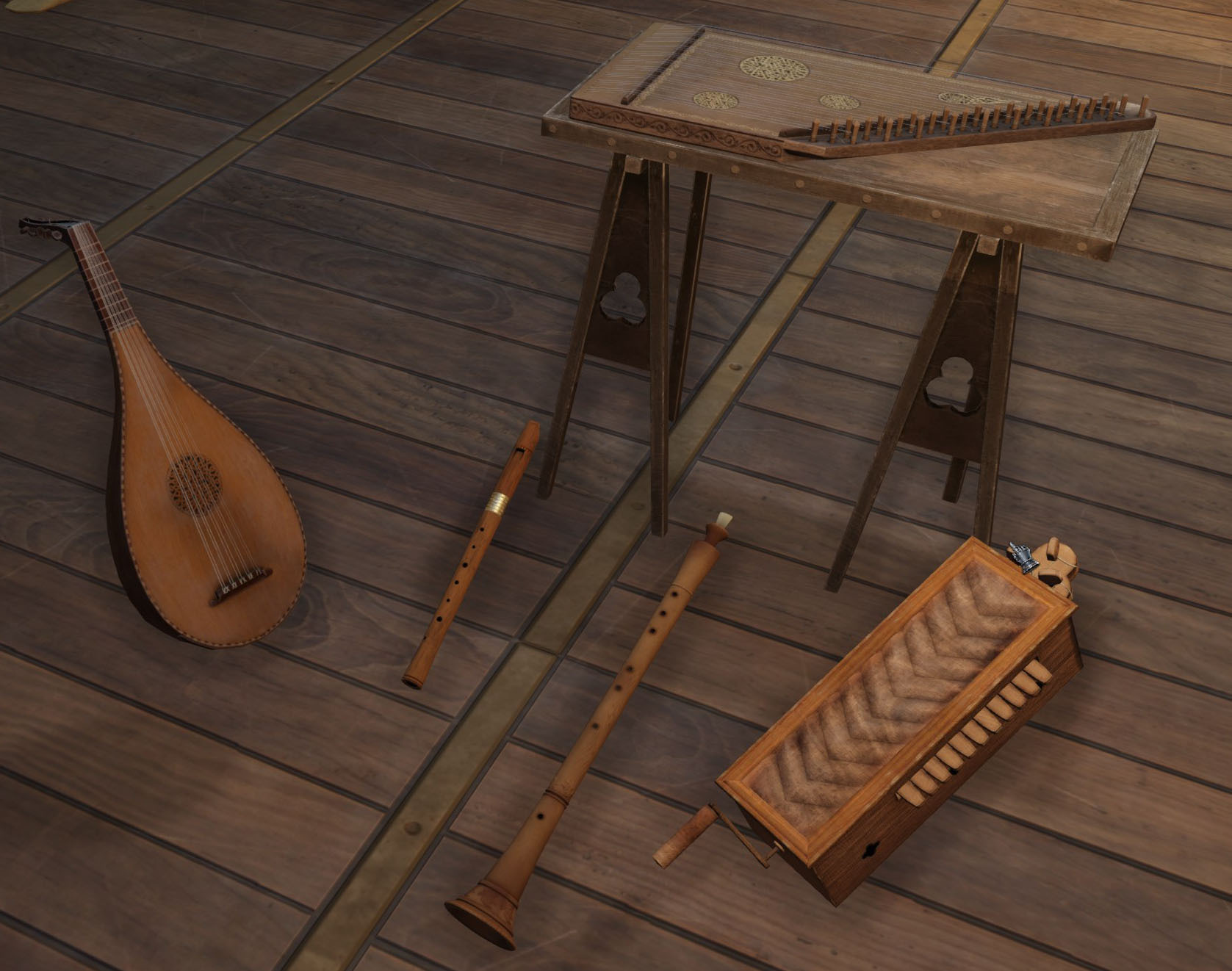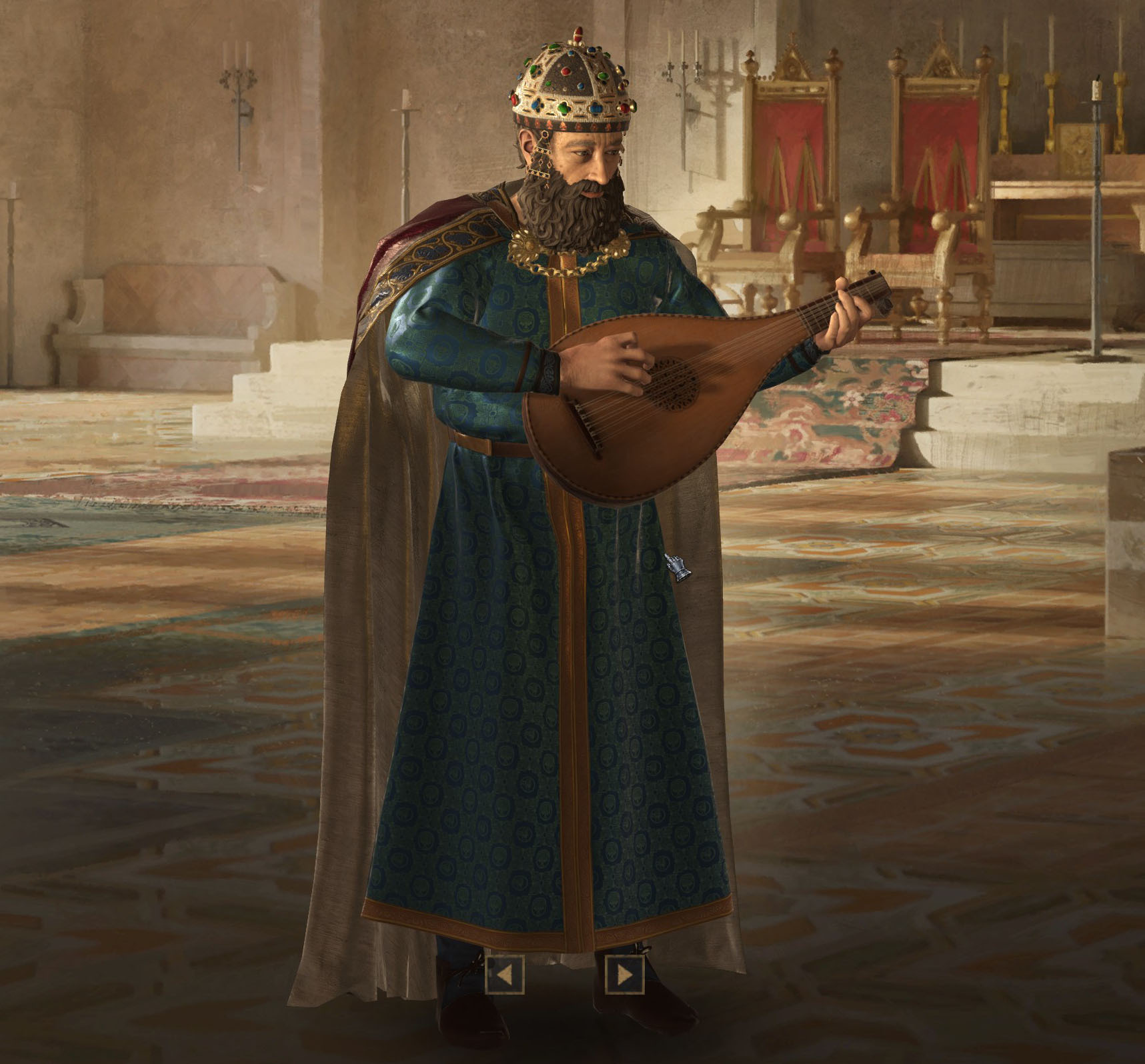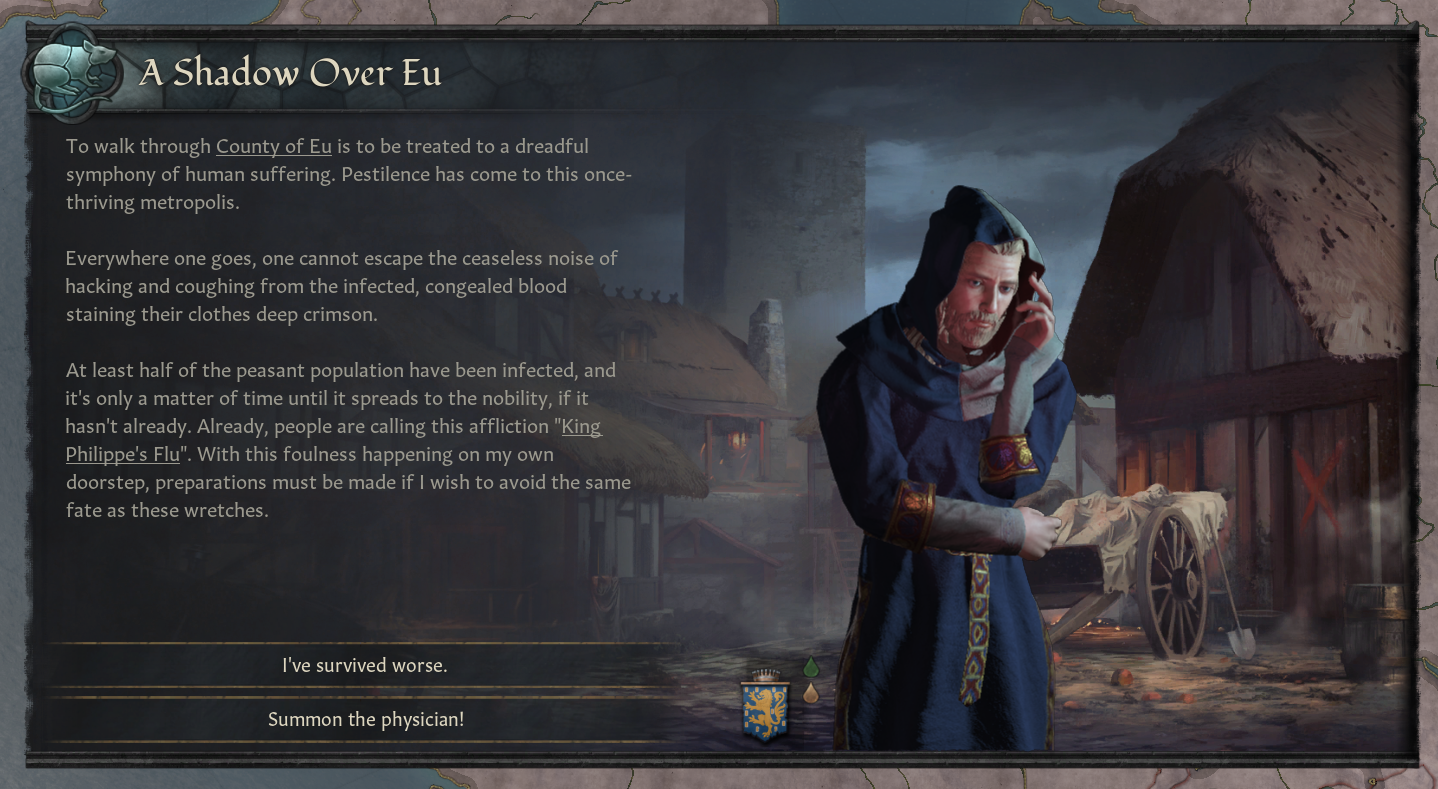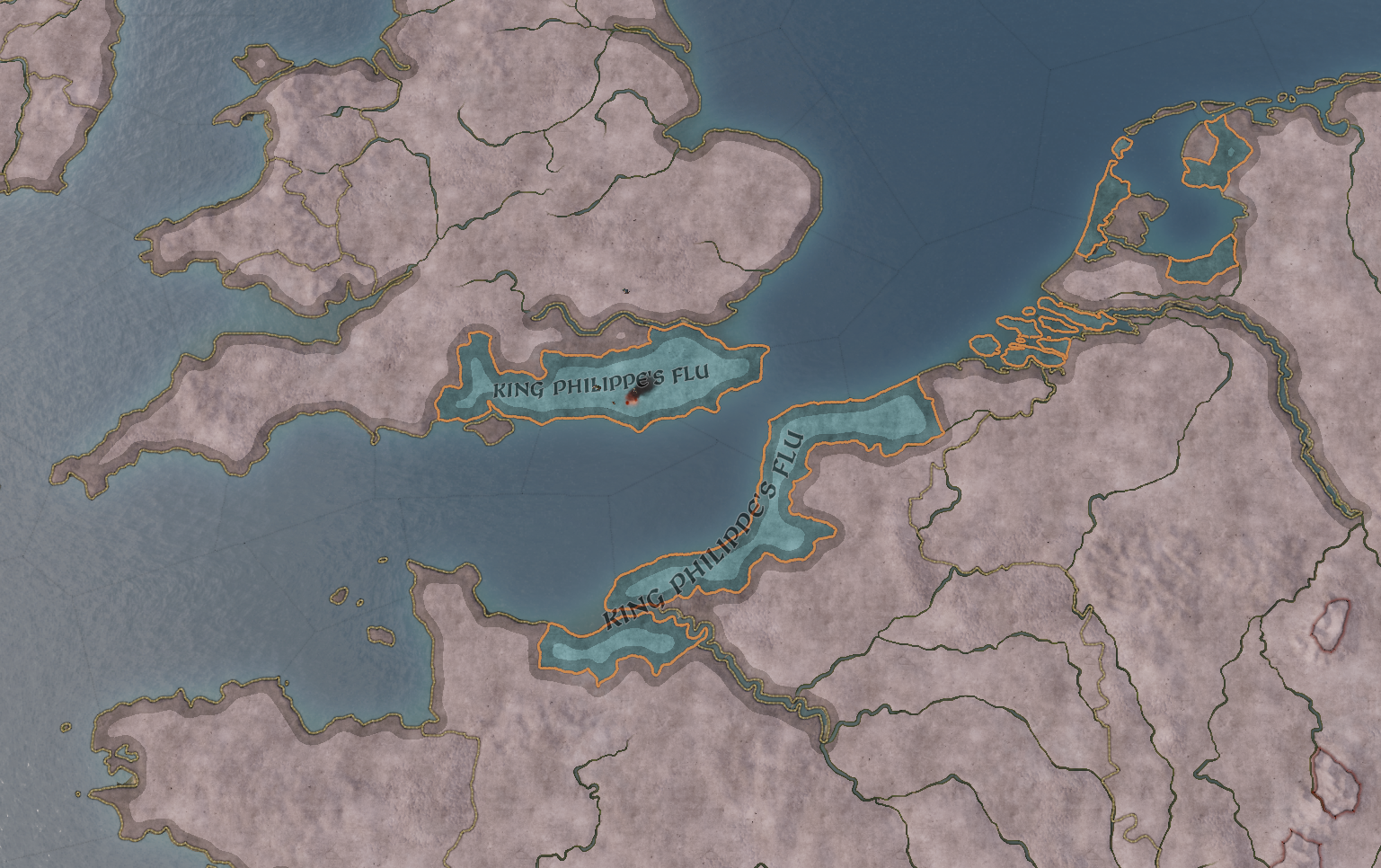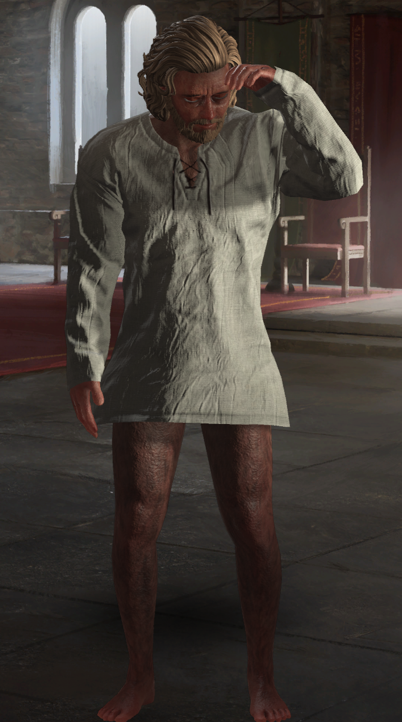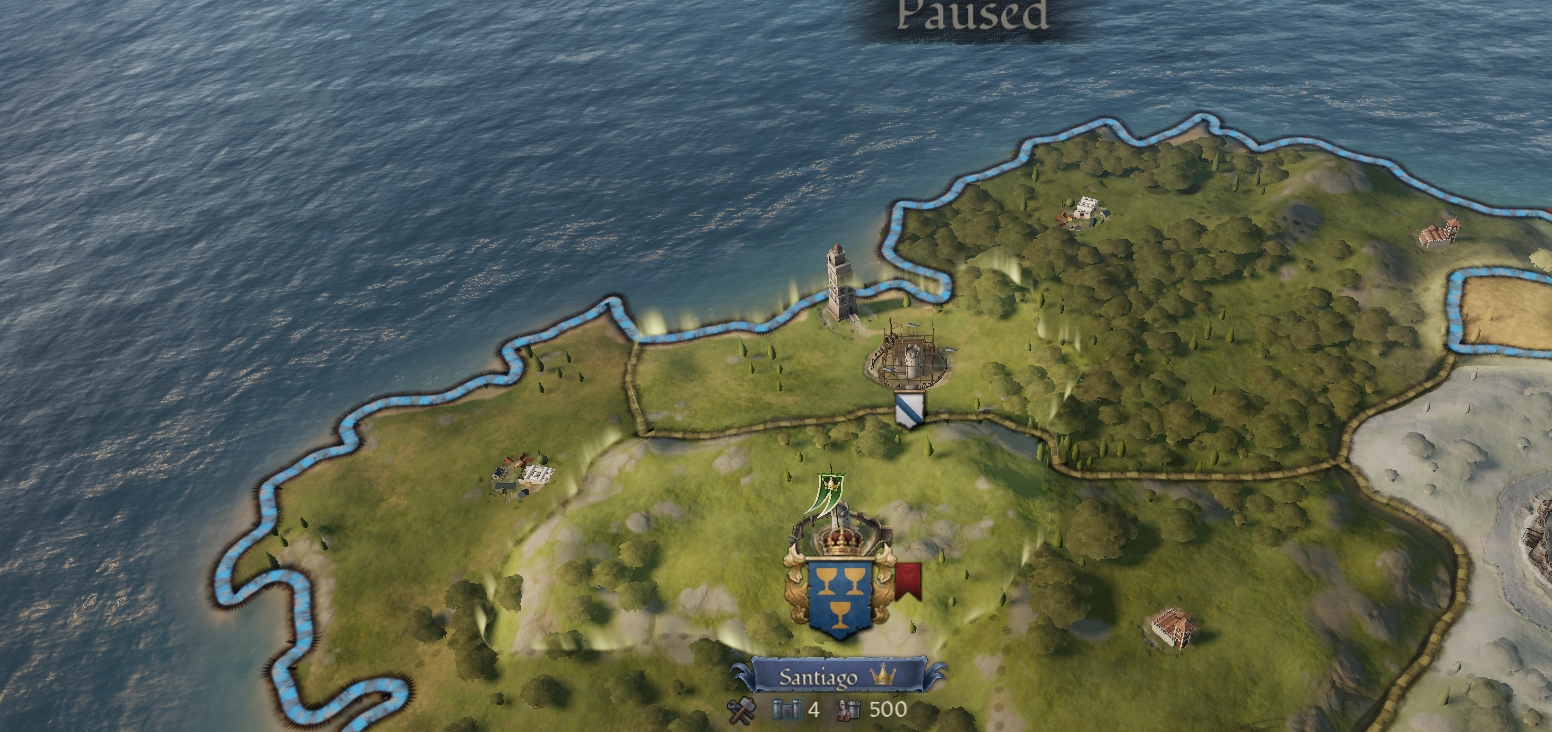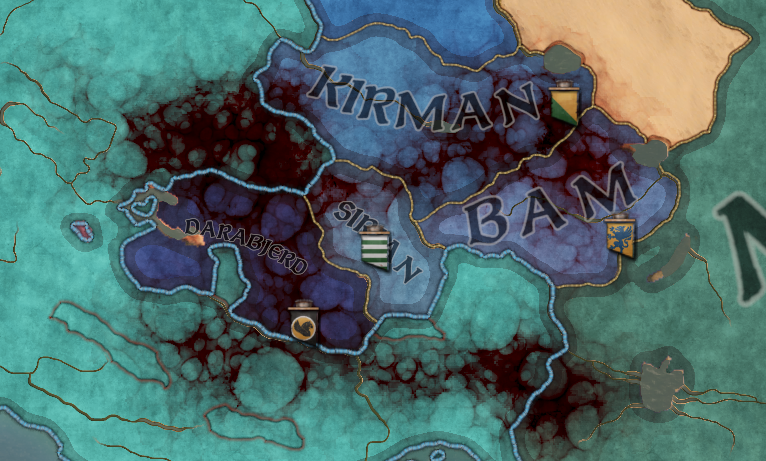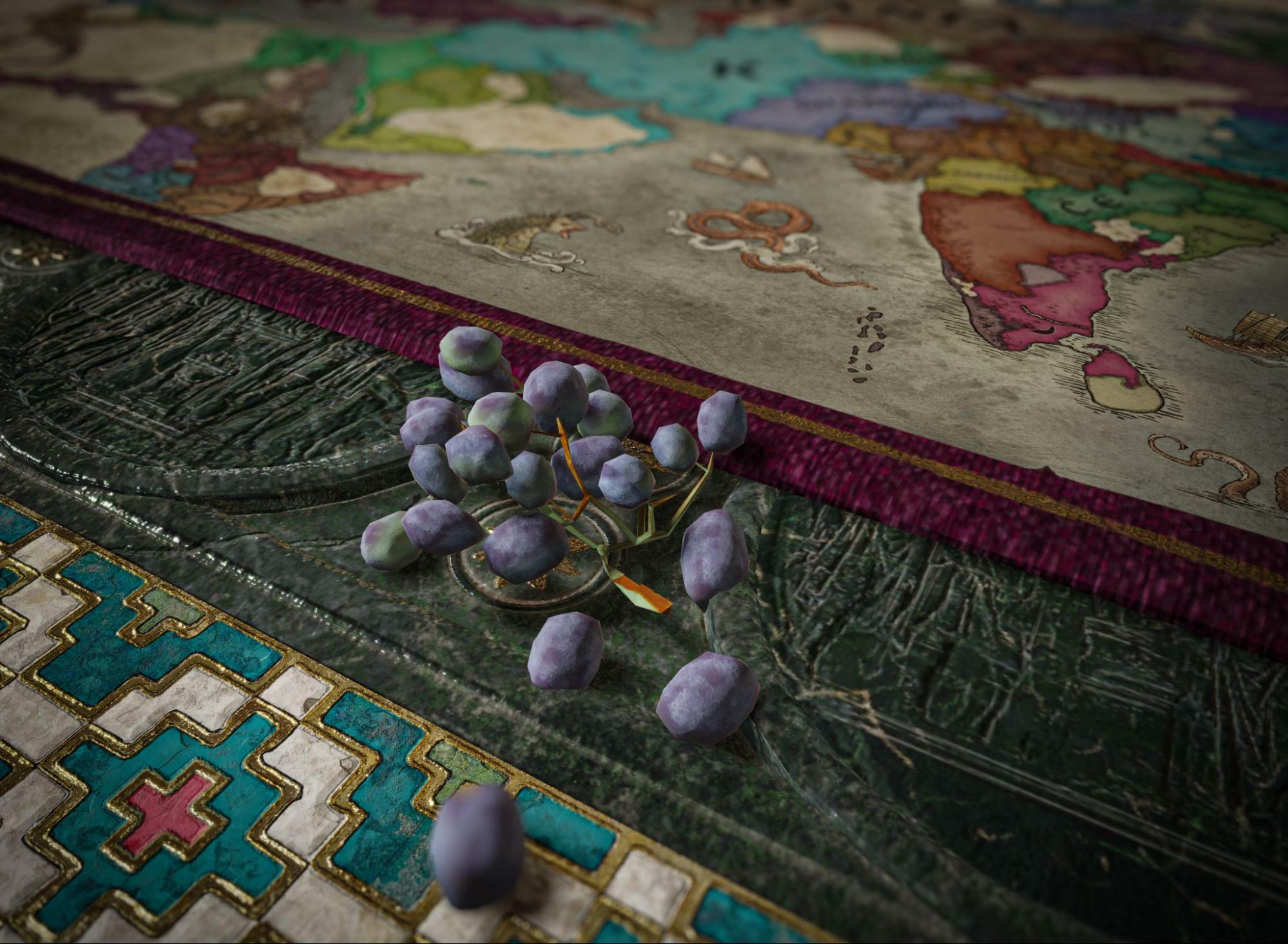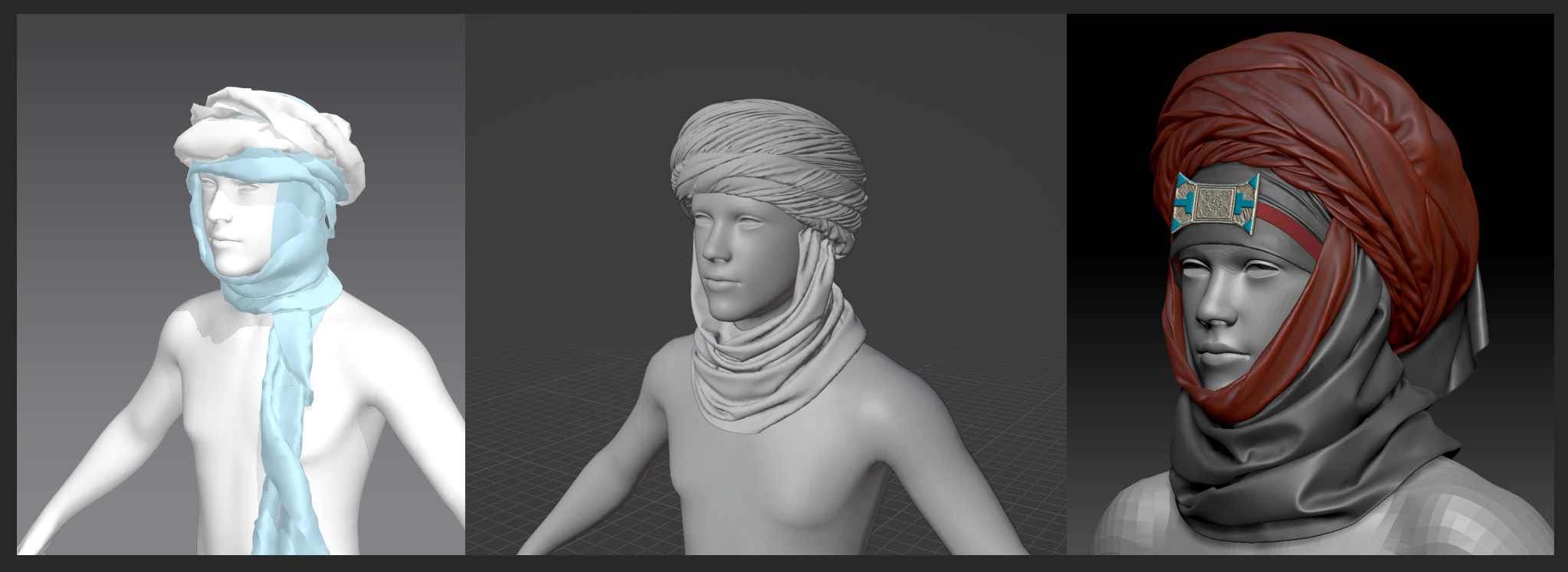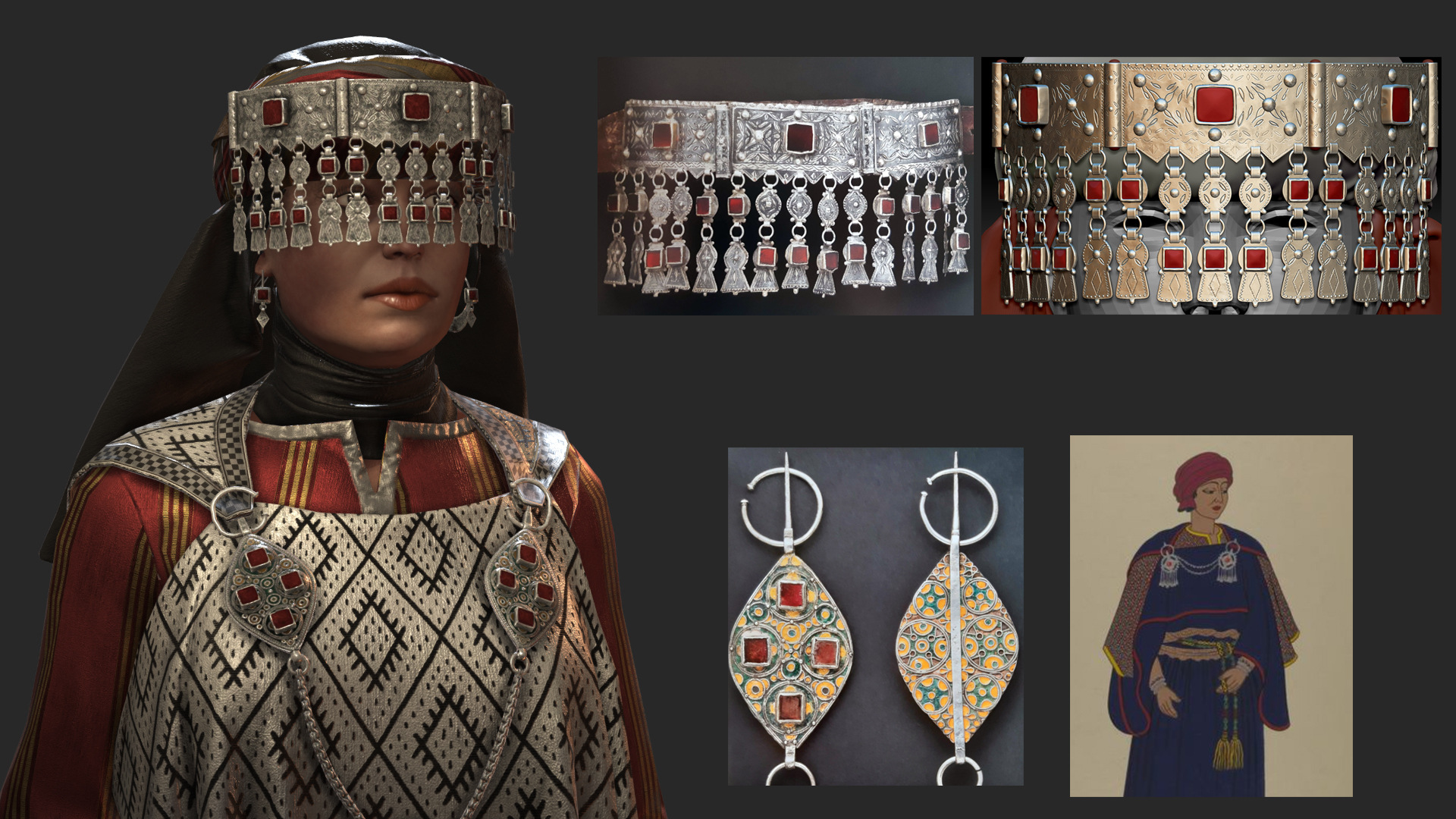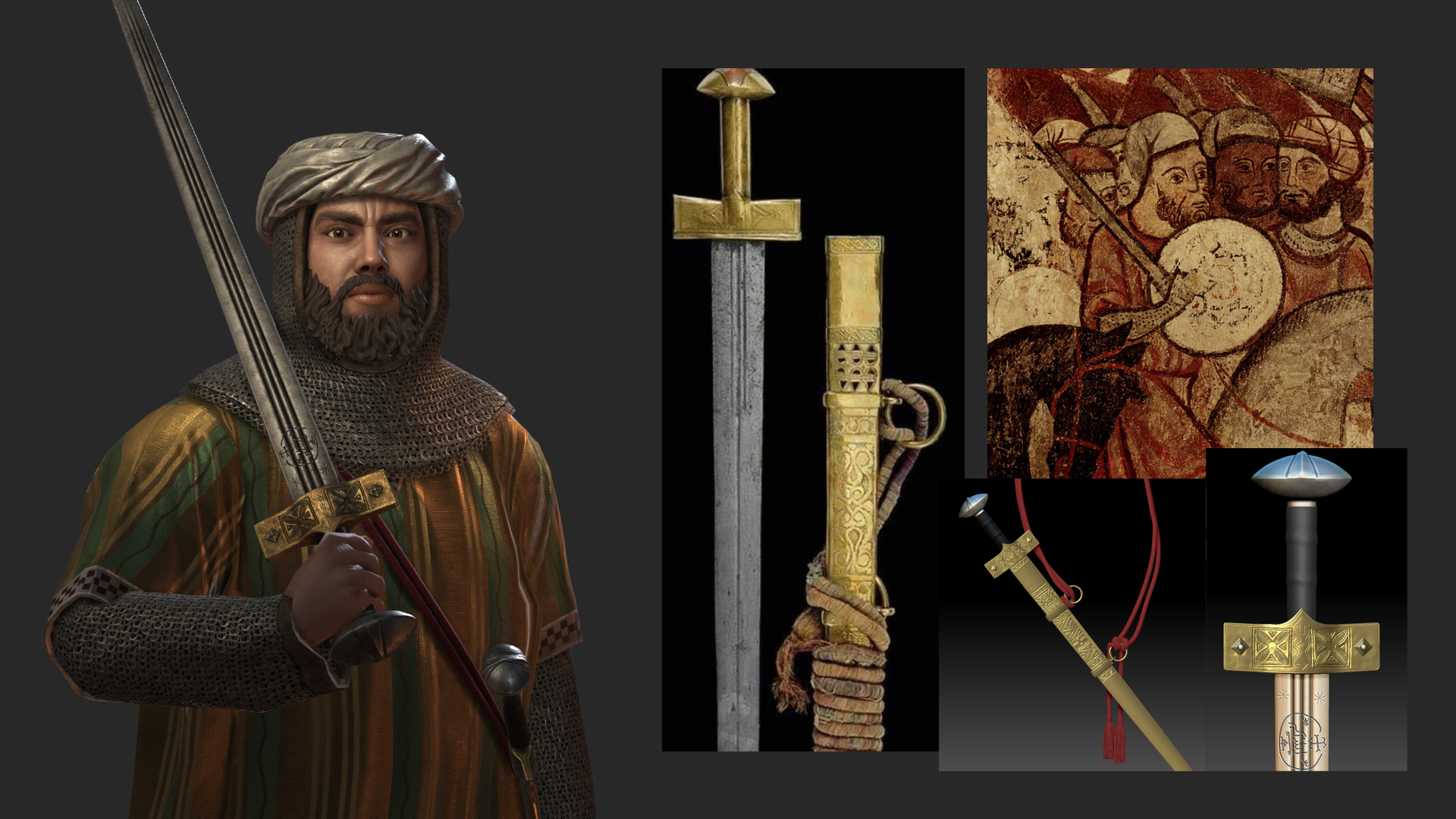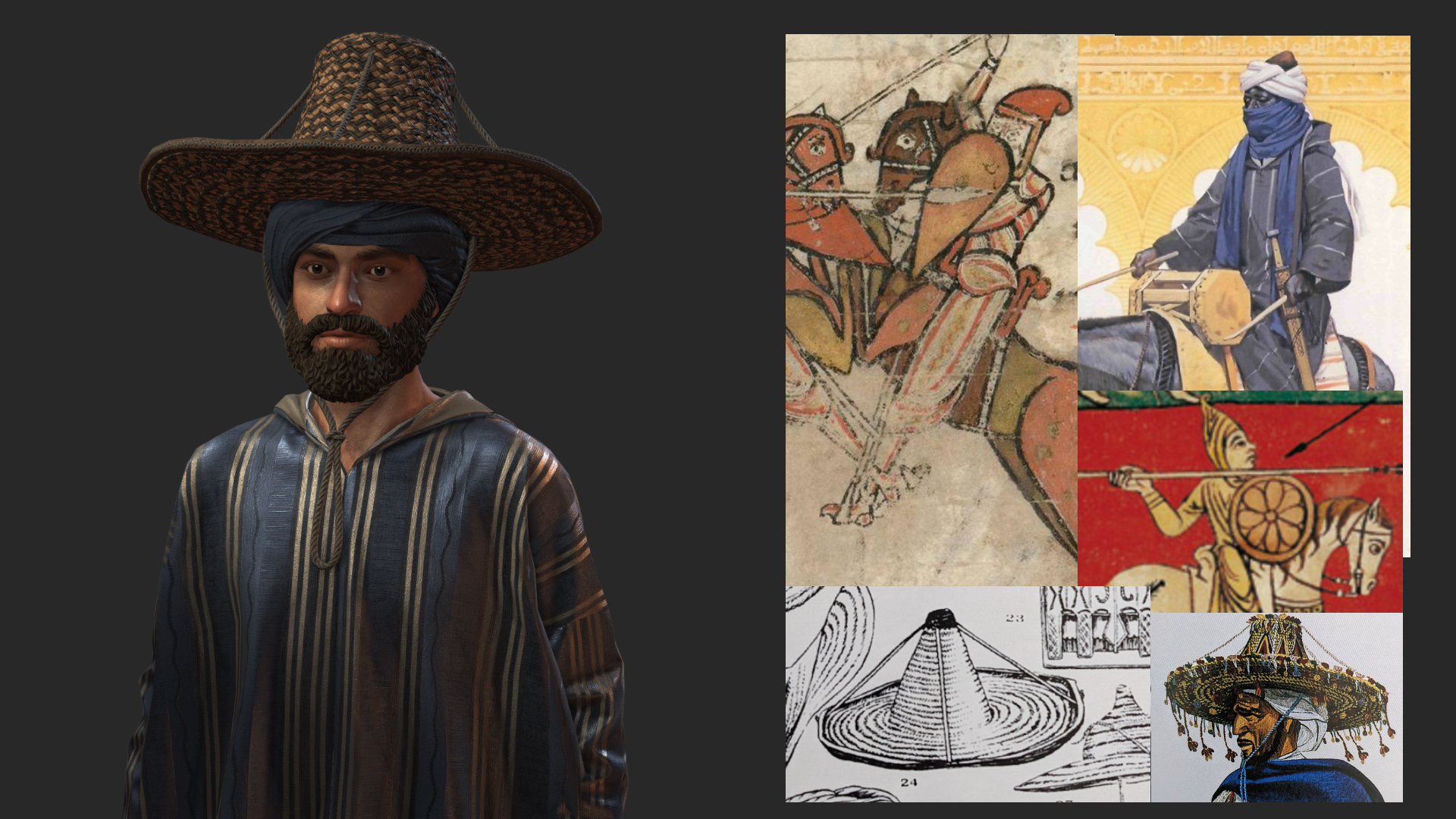
Crusader Kings III - PDX-Trinexx
Hello everybody! Today we're releasing our first Core Expansion for Crusader Kings III: Legends of the Dead and an accompanying free 1.12.1 "Scythe" Update.
Check out the release trailer below, and then the changelog itself under that.

We hope you enjoy Legends of the Dead and the free 1.12.1 "Scythe" update as much as we enjoyed making them!
Write glorious new sagas of military conquest and romantic adventures with Chapter III.
This Chapter includes two expansions, one event pack, and one cosmetic enhancement. Enjoy new mechanics, new events, and new historical flavor to add greater depth to Crusader Kings III!
https://store.steampowered.com/bundle/38036
Check out the release trailer below, and then the changelog itself under that.

Expansion Features
- Added Legends: a new system that allows you to create stories based on Legend Seeds (with events, decisions, court position tasks, and other ways to obtain them), a Legend Chronicler to visualize them, and special rewards.
- 3 Legend Types: Heroic, Legitimizing, and Holy, with bespoke flavor, effects, and rewards, including special Legendary Buildings and decisions.
- 3 Legend Quality Types: increasing the rewards upon completion and during its spread.
- Legend Promoters: sponsor someone else's legend for a much smaller cost.
- Added Historical Legends to characters in both start dates that would have a Legend Seed in history.
- Added many events, decisions and interactions to spread Legends, affect the rewards, and change the Chronicle.
- Added Legendary Buildings, with powerful rewards, unlocked after completing high quality legends and investing in the new Heroic Dynasty Legacy - all of them with special 3D models on the map, changing depending on the culture.
- Added Legend Seeds to the old Major Decisions, allowing you to start legends based on previous content.
- Added Legend Chronicler visual variations based on culture.
- Added a new Dynasty Legacy: Heroic, focused on Legends and unlocking new rewards for completing one.
- 3 Legend Types: Heroic, Legitimizing, and Holy, with bespoke flavor, effects, and rewards, including special Legendary Buildings and decisions.
- Added a special Black Death event chain for when the Black Death spawns, with special art, music, content and effects.
- Added new Diseases: Holy Fire, Bloody Flux and Measles, all of them available as potential plagues.
- 28 new character assets to immerse you into the late medieval era and give ailing patients and skilled physicians a distinct look:
- 3 variants of male late style western nobility clothes
- 1 variant of male bedchamber clothes
- 1 physician male clothes
- 2 variants of male late style western nobility cloaks
- 4 variants of male late style western nobility headgear
- 2 variants late style western commoner headgear
- 1 variant western royalty headgear
- 1 hooded male headgear
- 2 variants of female late style nobility clothes
- 2 variants of female bedchamber clothes
- 1 physician female clothes
- 2 variants of female late style western nobility cloaks
- 3 variants of female late style western nobility headgear
- 2 variants of female late style western commoner headgear
- 1 hooded female headgear
- 3 variants of male late style western nobility clothes
- Added a new Funeral activity: bury a close relative in a whole new activity, with new events, options, intents and rewards.
- Added a new Legendary Feast option to the Feast Activity focused on getting new promoters for your legend and increasing its spread.
- Added new Activity Intents: Extort Legitimacy and Spread Legend.
- Added a new building line to temple holdings: Scriptoria, which increases legend spread and county control.
- Added a new building line of Duchy buildings: Burial Sites. Build up your family mausoleum and obtain legend bonuses, plague resistance, piety, court grandeur, county control and popular opinion.
- Added a new Court Chronicler court position, focused on finding new legends and helping you spread yours both inside and outside of your realm using new Court Position Tasks.
- Added an exclusive Map Table, with unique assets that reflect both Plagues and Legends.
- Added map graphics VFX for the spread of legends.
- Added new legendary and fateful music tracks as well as new both Legend and Plague Mood Tracks.
Free Features
- Added Plagues: some diseases will now be treated as epidemics and spread through the map, causing Fatalities and infecting characters in that location.
- Added many new plague events, both for when a plague is in your realm and when it's approaching, and decisions to protect yourself, your family, or your entire capital.
- Added new events for the Court Physician, focused on plagues.
- Reworked old health events, adding new flavor, animations and art.
- Added new court position tasks for Court Physician - focused on helping with plagues, increasing piety and lifestyle experience - and for the Court Musician and Poet, focused on the spread of legends.
- Added a new Hospice building line, available in all sorts of holdings, and providing Plague Resistance and Piety.
- Added many new plague events, both for when a plague is in your realm and when it's approaching, and decisions to protect yourself, your family, or your entire capital.
- Added Elderly and Child Health, affecting younger and older characters more with certain diseases.
- New Disease Game Rules and special Black Death rules, affecting its frequency, year and place of spawn, including historical settings.
- Added Legitimacy: a new system to measure the perception of your right to rule, including the Legitimacy Expectations from both Powerful and Regular Vassals.
- Added Legitimacy rewards to old decisions, traits, and activities.
- Added a new Dynasty Legacy: Legitimacy, focused on increasing Legitimacy, unlocking new intents and improving your dynasty's education.
- Added Legitimacy penalties to some character interactions: Disinheriting a child, asking them to Take the Vows, or marrying a Lowborn.
- Added Legitimacy modifiers to title creation: allowing you to create a title from less de jure counties if you have a high Legitimacy level.
- Added Legitimacy rewards to old decisions, traits, and activities.
- Added a new Faith Doctrine: Funerary Tradition, that affects the main event and rewards from Funerals.
- Added a new Cultural Tradition: Water Rituals, that helps with plague resistance.
- Added new disease graphics on the character models.
- Added new epidemic travel danger type for locations with plagues present
- Added map graphics VFX for the spread of disease
- Added option to hide the disease map graphics
- Added a default Map Table, with new assets and art, that improves immersion and offers a physical place for the map.
- Restructured and polished Event Window so that it can accommodate VFX.
- New Event VFX: Flies, Fog, Legend Glow, Rain, Smoke and Snow.
- New animations and instruments: hurdy-gurdy, flute, lute, qanun, and shawn.
- Remastered music and effects, bringing the map to life.
- Monthly county control is now split into two separate 'Growth' and 'Decline' figures, each with their own modifiers.
- Added new birds flying over the map, with seagulls in coastal provinces and crows flying over infected holdings.
- Added a coughing animation to armies passing through infected provinces.
- Added new map models like Healers' Camps, Burial Grounds, and Funeral Pyres spawning naturally in infected provinces.
- The Scarred Trait is now tiered, with gradually more drastic visuals and effects according to the level of the trait.
- Added balding hairstyles and a system for male pattern baldness. Characters have a baldness value in their DNA which affects the age at which (male) characters start losing their hair.
Balance
- All Plague Diseases are now more deadly, especially the Black Death.
- Rebalanced other Diseases to account for Elderly and Child Health.
- Made Brythonic heritage less likely to destroy the title of England.
- Removing a guardian will now only reduce unity once every three months rather than every time.
- The Ill trait is now more deadly to adult characters.
- Slightly reduced the legend spread rate from buildings, shared languages, and culture heritages.
- Inbred trait now reduces initial Legitimacy.
- AI now considers epidemics quite an important factor while thinking about hosting and joining activities.
- Completing Roman Heritage legend now gives claims in Italy, North Africa, Greece, Anatolia, Syria, Palestine and Egypt.
- Increased development gain from coastal provinces.
AI
- Fixed AI being unintentionally less aggressive immediately after save-game load.
- AI should now be able to choose the "Dominate the Caliph" struggle ending option successfully.
- Make the AI remember when it last finished an offensive war between save games.
- Fix issue where activity intents were not being set correctly for AI activity attendees (would take default intent).
- Fix AI rulers waiting very long to convert their betrothal into marriage, if they gained their first title while being betrothed.
- Characters from savegames that were players before, and are no longer, will now get an AI strategy (and not sit brainless in their castle until death takes them).
- Fixed issue where ‘add_{budget}_gold’ triggers would not give extra gold, but only make the AI think they had more gold to spend, getting them to try and spend gold they do not have. Gold now actually gets created.
Interface
- Reworked interface for court positions:
- Entries are smaller so as to show more court positions at the same time.
- Court Positions can now have actions, similarly to Council Positions.
- Each Court Position has their own icon.
- Court Positions are color coded by their most important skill category.
- Courtier aptitude is color coded and has an icon to be more distinguishable.
- Entries are smaller so as to show more court positions at the same time.
- Added monthly change descriptions of control and development to holding view so players can take action on it directly.
- Added max_height property to widgets. Works just like max_width.
- Added min_height property to widgets. Works just like min_width.
- Consistently use our tooltip-style throughout the game (fixes breakdown tooltips in county view, HUD budget list, tax slots, ruler designer, and more).
- Explain county absolute control in tooltips where possible.
- Fix text alignment of long texts in breakdown tooltips, and apply better bottom margins.
- Fixed various icon and text alignment issues in the tax jurisdictions interfaces.
- Highlight development loss or stagnation in holding view.
- Removes expiration information from timed character modifiers that do not have a set expiration.
- Fix Regent portrait to no longer push Lovers portraits out of the UI window.
- Court position UI now allows filtering by if they have tasks or not.
- Marriage UI now shows the specific chance of inbreeding happening.
Art
- Chaplains now use Fate of Iberia temple art in the council view when relevant.
- Character view for Theocratic rulers, Chaplains, and Physicians now uses temple and study backgrounds.
- Concubine interaction now uses the faith temple background instead of a generic corridor.
- New loading screen illustration for "Legends of the Dead" expansion.
- 4 new Trait icons: Measles, Dysentery, Ergotism, Legendary.
- 2 new Memory icons: Plague and Legend.
- Travel Danger icon for Epidemics.
- 2 new Map Mode icons: Plague and Legends.
- 6 new Decision images:
- Archers
- Legitimacy
- Legend
- Family Tree
- Black Plague
- Tale
- Archers
- 4 new Artifact icons: Animal Figurine, Chronicle, Jar, Northern Mace.
- 5 new Story Event images:
- Apocalyptic Disease
- Black Death
- Heroic Legend
- Holy Legend
- Legitimizing Legend.
- Apocalyptic Disease
- 2 new Legacy Track illustrations: Legitimacy and Heroic.
- 2 new Activity Intent icons: Legitimacy, Legends.
- 11 new achievement icons.
- Polished Council and Courtier Task icons.
- 7 new Courtier Task icons:
- Neutral
- Espouse Legend
- Generate Seed
- Promote Legend
- Attend Poor
- Guard Family
- Treat Epidemic
- Neutral
- Polished all circular progress bars.
- 7 new Event Backgrounds:
- Catacombs
- Oasis
- Pyre
- MENA Physician’s Study
- Tribal Physician’s Study
- Indian Physician’s Study
- Catacombs
- Condemned Village
- 3 new full body disease decals
- 16 new Legendary Building models:
- Christian Shrine
- Norse Mead Hall
- Norse Shrine
- Desert Hunting Lodge
- Dharmic Shrine
- Indian Heroes PIllar
- Hunting Lodge
- Indian Palace
- Islamic Palace
- Islamic Shrine
- Mediterranean Monument
- Norse Runestone
- Steppe Shrine
- Western Hero Statue
- Western Palace
- Western Watchtower
- Christian Shrine
- 7 new Building icons:
- Graveyard
- Hospice
- Legendary Shrine
- Legendary Hunting Lodge
- Legendary Watchtower
- Legendary Palace
- Hero Statue
- Graveyard
- 9 new props:
- Alto Flute
- Bronze Mortar
- Bronze Pestle
- Chifonie
- Lute
- Northern Mace
- Book
- Qanun
- Shawn
- Alto Flute
- Ritual Washing Culture Tradition icon
- New Character Portrait shader. Gives characters a painterly look to them.
Localization
- Fixed a typo in the Find a new Faith for Persia decision.
- Fixed missing type when localizing HOSTAGE_OATH_OF_FRIENDSHIP.
- Fixed untranslated weapon type name in Exotic Arms event.
- Fixed a typo in City Walls of Toledo description.
- Fixed missing loc in Demand Conversion.
- Fixed AI acceptance tooltip to Request Incursion.
- Fixes trigger tooltips for options in Embellish Capital Decision.
- Fixes invalid tooltip for Take the Vows option in the Negotiate Release character interaction.
- Shortens event text in Travel: A Feast for Falcons to avoid a scrollbar.
- Fixed broken text in the House Feud rivalry reciprocation event.
- The tooltip in the event option for ending a house feud is now fully localized.
- Removed incorrect “cannot march here” text in tooltips for army units.
- Adds missing localization for modifier affecting faction join chance regarding Detractor trait.
- Fixed Wetlanders cultural tradition description.
- Propose Alliance interaction tooltip now correctly informs about existing hook on target character.
- Fixed a tooltip info about losing house unity when refusing the independence faction demands.
- The tooltip for the Wootz Steel innovation now lists the terrain requirement for the Wind Furnace building.
Game Content
- Added Situation Log entry if a Vassal is waging a war which would make them independent or change Liege upon victory.
- Removed regency option from Challenge House Head interaction.
- Vassals now receive a message if their liege or above starts or succeeds in converting a county in their sub-realm.
- Child rulers under 12 are now allowed to sponsor inspirations. (Kid: "Goo goo pretty", Inspired Courtier: "Sire has Spoken! Thy will be done.")
User Modding
- Add complex trigger support to morph_gene_value.
- Added NCamera::START_ZOOM_STEP define for more control over starting map view when selecting a character.
- Added new county triggers:
- monthly_county_control_growth
- monthly_county_control_decline
- monthly_county_control_growth_factor
- monthly_county_control_decline_factor
- monthly_county_control_growth
- Allow changing trait XP on dead characters
- County trigger 'county_control_rate' is now called 'monthly_county_control_change'.
- County trigger 'county_control_rate_modifier' gone, it is split into 'monthly_county_control_growth_factor' and 'monthly_county_control_decline_factor'.
- Tags set on portrait accessories can now influence decals and texture_overrides (Example: a hairstyle can trigger a head decal to be on/off now).
- Feed messages of the same type can now be auto-combined into one by using ‘combine_into_one = yes’.
- Text icons can be colorized by specifying a color definition in their configuration, such as `color = "color:red"`.
- Color of text icons can be overridden in localization strings by doing `@icon_name:color_name!` or inherit from the current formatting by doing `@icon_name:inherit_color!`.
- Deprecated ‘is_widget_open’ trigger, preferred trigger for this functionality is new faster ‘is_widgetid_open’ trigger, which works on widgetids instead of widget names.
- Added possibility to store script variables on dead characters.
- Added ‘on_yearly’ effect to court positions.
- Renamed ‘tooltip_enabled’ to ‘tooltip_visible’ in gui script.
Databases
- Cleaned up naming for some Houses and Dynasties in India to be more consistent with how other house and dynasty names are represented.
- Marzoban Zahhak of Upper Ghur is now the uncle of Ghurshah Sūri of Ghur in the 867 bookmark
- The Badami, Kalyani and Vengi Chalukyas are now considered branches of the same dynasty.
- Shazhou's culture is now Han rather than Sogdian in 867.
Bug Fixes
- Celibate trait no longer modifies opinion about characters with Eager Reveler trait.
- Event chain Great Expectations no longer can result in a potential game over due to heir gender.
- The Umayyad Strikes Back achievement now correctly requires Sunni Caliphate title.
- Non-clan rulers now get notifications about tax jurisdictions if they have Clan vassals.
- Raj'a tenet now is available for custom Zoroastrian faiths.
- Manage Royal Guards Martial Task decreases success chance for Enemy Hostile Scheme instead of increasing it.
- Skill bonuses from Confidants are now named correctly.
- The Tomb of Batsheba now increases close relative opinion of holder instead of increasing holder opinion of female rulers.
- Seljuks will no longer try to become your vassal if you are duke or below.
- House Feud ending event has now fully localized and truthful tooltips.
- Exaltation of Pain tenet no longer has a pink description. Sad.
- Fixed notification about a wrong artifact being stolen from you.
- Knight training from Mentor accolade now tells you the truth about the hastiluder track your knight is being trained on.
- Prevent the player from being able to deselect all radio buttons in the interaction window.
- Fixed Canterbury Cathedral not being a Point of Interest when upgraded to lvl 2 and 3.
- Fixed Castles not showing a 2D icon when upgrading them.
- Fixed OOS issue related to timed modifiers on travel plans.
- Fixed a bug in the Request Contract Assistance interaction so that it's finally usable.
- Fixed a multiplayer bug where players could generate different names for an accolade, leading to an OOS error.
- Fixed incorrect lighting setup in one of the Zoroastrian temple event backgrounds.
- Fixed issue where dead characters might both have both a 'former' and 'current' spouse that is the same.
- Fixed travel modifiers stacking when they should not (stacking quarreling entourage modifiers could escalate into a shouting match of epic proportions).
- Fixed you referring to yourself as your liege when changing stance during the Iranian Intermezzo.
- Fixed a graphical issue in the inventory with historical artifacts when their culture isn't set.
- Fixed House head succession if both the house head and heir die on the same day (house no longer cursed with a dead house head for eternity).
- Iranian rulers will now use Iranian clothes much more often.
- Off to play event will no longer trigger if the host of the event has died.
- Partially shaved hairstyles now have a proper 'clean' dome.
- Player will get correct notification & better GUI when "Abbasid Humiliation" struggle ending with "Dominate the Caliph" option is available.
- Positive county control change % modifiers now no longer make negative control changes bigger (they do not affect those anymore).
- Prevent you from becoming your own tax collector after succession.
- Raised armies now start with full supply instead of a fixed 100 (relevant if their supply capacity was increased by modifiers such as the ‘Living off the Land’ perk).
- Reduced time on disrespected elders modifier.
- Replaced all instances of script values for aptitude expecting incorrectly a level distribution with the correct distribution of.
- The Denounced, Disinherited, Extolled by House, and Accused of Decadence traits will now be removed if a character becomes Dynasty Head/House Head respectively.
- When marrying a wandering character via a grand wedding, they will no longer run back to their previous location after the wedding.
- When title is revoked from a ruler they can steal counties from vassals if the ruler has any other non-titular non-head of faith title and has any vassals to steal from.
- You can now revoke all titles of a vassal that hold a HoF-title, causing the HoF-title to be destroyed.
- You can now revoke vassal-of-vassal Holy orders where appropriate (via decision or button-interaction on barony).
- Fixed an edge case where viziers would, under certain circumstances, reduce your tax gain from vassals rather than increase it.
- Fixed bug where part of the ‘Tutorial’ button was unclickable.
- Yearly cultural acceptance changes will actually trigger roughly yearly instead of sort-of bi-monthly.
- Fixed that potential knights come knights immediately, instead of waiting a day (or longer for AI).
- Added safety check to travel_completion_event.1000 so it does not trigger if the current travel plan was aborted.
- Control Growth multiplier modifier no longer applies its modifier if the growth is negative.
- Court Scholar court position now correctly only requires Legacy of Persia DLC, and not Royal Court as well.
- Ethos is now correctly listed in the Cultural Pillar encyclopedia entry.
- Fixed Dismantle Byzantine/Holy Roman Pretenders decision being available more than once per lifetime, which broke the war declaration.
- Fixed a bug where a Hostage could remain a hostage after the Warden inherits the Home Court from a family member.
- Fixed a bug where the attacker's max troop count was always used as the losing side's max troop count when calculating war score from battles.
- Fixed a bug where winning a battle as the attacker would use the defender's scaling for calculating the war score.
- Fixed an issue where an aborted travel plan could progress travel days.
- Fixed an issue where an aborted travel plan could skip to the next destination.
- Fixed an out of sync where host and client disagree on who won a battle.
- Fixed bug where a recently landed, former court position employee could sometimes get the salary twice in a month.
- Fixed characters sometimes not being correctly added to entourage and court in travel events.
- Fixed issue where accepting demands when negotiating to Challenge House Head would not make you the House Head.
- Fixed issues with the Challenge House Head events when playing as House Head.
- Fixed OOS error on hotjoin where an unlanded court position employee becomes landed, loses their position and gets their salary later in the month due to changed rank.
- Fixed the Execute a Detractor/Supporter Iranian Intermezzo catalyst never firing.
- Fixed the Homeward Bound travel event breaking if your entourage was empty.
- Fixed war victory against same or higher tier ruler Iranian Intermezzo catalysts not firing.
- Fixed wiping the Seljuk's invasion not allowing you to end the war, added war target title to its name and disabled hostage peace options.
- Fixes issues with sexuality, tooltips, and pregnancy in the Adventurer Inspiration event Lady/Lord X's Lover.
- Holding Court will now always grant a small amount of Court Grandeur at a minimum.
- It is now only possible to share a Spouse with a family member in Polygamous faiths if all parties believe in Unrestricted Marriage.
- Prevented negative AI acceptance modifier being added to Offer Vassalization acceptance after having purchased a truce.
- Religious heads are no longer given the option to embrace Jesus in the Wanton Desires stress event.
- add_courtier and set_employer effects can no longer be used to return a hostage to their home court.
- Viziers (and Stewards) without titles now correctly receive a monthly gold income too, based on their liege. It shouldn't require a title to mooch off some funds.
- You should not be able to grant lessee temple holdings to other characters when your court chaplain position is empty
- The Dome of Soltaniyeh is now correctly considered to be a ‘Wonder’ travel point of interest.
- Fixed "weight_multiplier" for events - multiplied value was used to filter out "0-weight" events, but not for actual weight picking.
- Fixed Coat-of-Arms graphics to update immediately when the new or old holder is a clan and overrides the default CoA.
- Fixed re-activating a dynasty house when a new member wondrously appears again (usually happens when the last member dies while their wife is pregnant - the baby being born will revive the house).
- Fixed crash that could happen when opening up the barbershop while playing an unplayable character (through observer mode for example).
- Couture of the Capets character assets are now properly available in the barbershop.
- Allow lieges to build in holdings they lease out.
- Fix court amenity expenses costing piety or prestige to actually use those resources and not gold.
- Character tooltips in Activity Window and Event Window have been adjusted to not block characters in certain resolutions.
- Added missing Faction triggers.
- Fixed broken Iranian Resurgence check.
- Disallowed courtiers being taken hostage by their own liege.
- Fixed a very unperformant Seljuk effect.
- Fixed event with two childhood Traits.
- Fixed Seljuk Invasion target.
- Fixed Zakat Tax Decree.
- Fixed an edge case where you were able to start planning a Grand Rite without a witch trait or witch secret.
- Fixed bug where the vizier position was invalidated due to us checking if our liege could have one, not us.
- Fixed Iqta description and effects are not at odds with each other anymore.
- Made it harder to steal parents from their children's court, and impossible to steal unlanded guardians, court position holders, and councilors.
- Fixed max limit on scaling House Unity modifiers.
- Fixed scrollbar in friendship letter.
- Fixed an error when a dog seller leaves your court.
- Fixed error log showing errors for decision items in observer mode.
- Fixed double notification when someone else "Renewed the Caliphate".
- Fixed removed stray modifiers if a Grand Wedding invalidates.
- Fixed the history of artifacts stolen during a siege.
- Fixed accusing servants of being the real father of someone else's heir when they are younger than the heir in question.
- Fixed Mozarabism appearing as a regional heresy outside of Iberia.
We hope you enjoy Legends of the Dead and the free 1.12.1 "Scythe" update as much as we enjoyed making them!
Write glorious new sagas of military conquest and romantic adventures with Chapter III.
This Chapter includes two expansions, one event pack, and one cosmetic enhancement. Enjoy new mechanics, new events, and new historical flavor to add greater depth to Crusader Kings III!
https://store.steampowered.com/bundle/38036
Join the conversation and connect with other Paradox fans on our social media channels!
Official Forums Official Discord Steam Discussions
Twitter Facebook Instagram Youtube





